#I really love how present the environmental theme has been so far
Explore tagged Tumblr posts
Text
Ever think about how confused Sauron is when Celebrimbor mentions the kingfishers? How the dried up riverbed and surrounding battlefield used to be filled with nature?
How they had their own unique ecosystem, full of plants and animals like holly trees and kingfishers?
And how, despite wanting to "heal" Middle-earth, Sauron never even spared a single thought to the nature he would be destroying in this goal? How he didn't even realise that they were there to begin with (even though they are the symbol of the Southland kingship he carried as Halbrand)?!
How his complete disregard for them proves above all else how little he has grown since his fall to Melkor/Morgoth, no matter how much he might believe in his own repentance?!?!
... yeah, me neither... 😔
#I really love how present the environmental theme has been so far#also I can't be the only one who sees the parallels between Aulë/Yavanna's “they will kill my trees” fight and the Sauron/Celebrimbor scene#just some of Aulës influence peaking through I guess#sauron x celebrimbor#silvergifting#sauron#mairon#celebrimbor#tyelpë#lord of the rings rings of power#rings of power#the rings of power
79 notes
·
View notes
Text
Another semi-coherent rant on climate change, the value of idealism, and TGCF (I finally finished!)

Well, I finished Tian Guan Ci Fu. And, oh man, if you read my last post, you’ll know that I was terrified that the entire novel would be a criticism of blind idealism. But I am SO glad I was wrong!!! Looking back on what I wrote before… it’s kind of hilarious how worried I was. I was so sure that I knew where it was going, was so busy preparing myself to be offended/emotionally crushed, that I wouldn’t even entertain the idea that maybe MXTX had a similar worldview to me all along.
In my defense, aside from the line, “Something like saving the common people… although foolish, it is brave,” everything seemed to point toward the idea that trying to do good is pointless. I mean, up until the moment when Xie Lian was lying with a sword in his chest on the streets of Yong’an, all of his efforts to do good had essentially been in vain. He hadn’t been able to help anyone.
And then, when the one guy stopped and gave Xie Lian his hat, I dunno, I just cried. It was so perfect! Like, ugh, damn you, MXTX! So sneaky… destroying us, just to bring us back later!! It was such a small, insignificant win, but it was exactly what Xie Lian (and I) needed. I love the line, “Just one person was enough!” Just one person doing something selfless. It’s enough to give us hope.
It really resonates with me because I think a lot about how to maintain hope. In terms of the climate crisis, I feel like Xie Lian—completely powerless. I want to stop eating meat, use less plastic, spend more time on environmental activism, but honestly, what do any of these things matter? The meat industry is not going to change because I choose to stop consuming. Even my activism has a completely negligible effect—whether or not I join a protest or write a letter to my congressman will almost certainly not be the deciding factor for any climate legislation, no matter how much effort I put in.
And yet, I still want to. I love the moment when Xie Lian chooses to get stabbed over and over rather than create a second plague of Human Face Disease, and White No-Face asks him in shock, “Why??”—as in, why would you ever do that? And Xie Lian responds: “I don’t have a reason—just because I want to! Even if I explained it to you… Useless trash like you wouldn’t understand.” This line is so great. Xie Lian can’t explain it to White No-Face, because, in truth, it isn’t entirely logical. It can’t be explained by reason. I want to do my measly, unimportant part to help the world… because I want to. Because it feels right. Because it’s my way of keeping my heart, of maintaining faith that there is some good in this world worth upholding. (As an aside, I love how the English title of the live action drama—which we may never get to see, God damn censorship!!!!—is called “Eternal Faith.” Of course it refers to Hua Cheng and Xie Lian’s faith in each other, but I think it also means having eternal faith in the value of doing good, despite centuries of experience that seem to show its pointlessness.)
As I talked about in my last post, if you zoom out far enough, nothing really seems to matter. Everything we love and care about will one day be gone. And yet, I believe we still have to act like it matters. This is the basic tenant of existentialism, and I think MXTX portrays this philosophical paradox really beautifully.
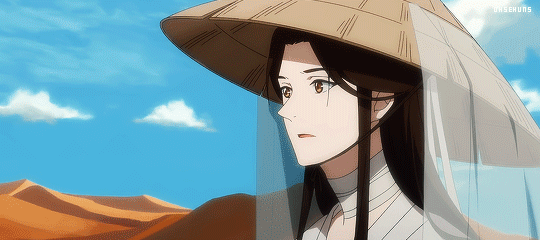
It’s funny, because I think MXTX has a lot of profound things to say, but in an interview I read, she warned against viewing her work too deeply, saying, “I am not a guru.” I get that she may not want the responsibility of giving people spiritual advice, but I do think she presents some really fascinating, really novel, philosophical ideas. So, sorry MXTX, but I’m about to analyze TGCF like it’s a piece of freakin scripture. Soo here we go…
The main theme she comes back to again and again is that fortune is limited, so the only way you can do good for others is by taking fortune from somebody else. Which leads the characters to a bunch of ethically impossible choices: the people of Yong’an and the people of Xianle can’t all be saved (Xie Lian must choose who to help), neither can the people of Wuyong and the surrounding kingdoms (Prince of Wuyong must choose), and Shi Wudu can’t save his brother from a tragic fate without taking fortune from an innocent person. When the characters try to avoid choosing, and try to “play God” by creating a “third path,” it just invites disaster.
But is this really true? Is fortune actually limited? It’s an idea that reminds me of Buddhism and Daoism, but also seems kind of revolutionary… (I like to think I know something about Chinese philosophy but it could certainly be a thing and I don’t know). I don’t believe in fate, but I do believe in limited resources, and the idea that nature tends toward balance. I think conceiving of it this way, as a pool of fortune, is really interesting.
It reminds me of this Meme:

In other words, who is the protagonist and who is the villain is entirely based on perspective. And, according to the laws of nature, we all must survive by eating others, or causing others to starve (i.e. avoiding being eaten).
I tried to think if this is really true in all areas of life. I’m a teacher, and one of the ways I convince myself that I am doing good in the world is by helping my students—preparing them well for college so that they can get into good schools and follow their dreams. But then, is this just taking fortune from others? If I do prepare my students well, and as a result they all get into top universities, does that mean they are taking spots away from other students? Am I simply just helping “my own,” at the expense of others?
One place where I see this concept play out very clearly is with our modern, industrialized society. As I mentioned in my last post, we live in a world of abundance. Most of us have enough food to eat, live in houses with electricity and running water, and don’t worry about a whole host of diseases endured by our ancestors. It seems we have done what Xie Lian couldn’t—we have expanded the well of fortune for most of humanity.
But this fortune wasn’t spontaneously created. It was taken from other species. It was borrowed against our own future, when climate change will likely destroy this world of abundance we have created, causing untold suffering. In truth, when it comes to prosperity, there is no such thing as a free lunch.
Even now, when we ought to be enjoying our fortune, most of us are not happy. We want other things. We take food, clothing, and shelter for granted, creating even bigger, more lofty demands—a bigger car, a better house, a machine that’s sole purpose is to make bread. In fact, it seems like whenever we make things “better,” the goalposts just move. I recently read a book called Four Thousand Weeks: Time Management for Mortals, which mentioned that with the advent of washing machines and vacuum cleaners, everyone assumed there would be more free time. Yet, the real outcome was that standards of cleanliness just changed. Suddenly, people expected you to wear fresh clothes every day and have a perfectly dust-free home, which meant spending just as much time cleaning as in the past.
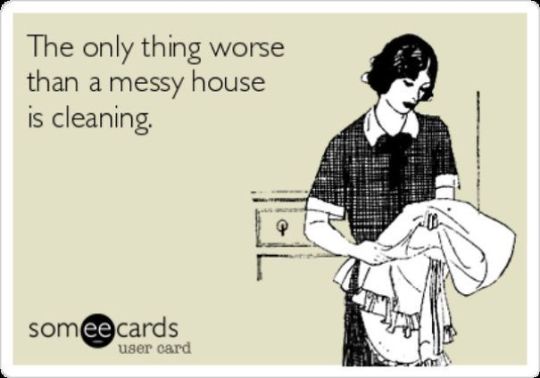
And according to psychologists, getting what we want doesn’t really make us happier. Instead, something like getting a promotion causes our happiness to spike, before it quickly returns to baseline. The psychologist Dan Gilbert writes that the purpose of our emotions is to act like a compass—to tell us which direction to go in. If you feel good, you can continue the way you are going. If you feel bad, you should probably turn—make a change. But if you get what you want and become permanently happy, your compass is now broken. It’s stuck in one direction and becomes useless.
All of this is very Buddhist, of course. Suffering is not caused by our external circumstances, but our desire to change them.
Like I said, I don’t necessarily believe in “fate” or “fortune.” But I believe this all points to something deeper that MXTX is getting at: which is that we cannot fundamentally make a better world, for the common people, or for anyone. This idea of “better” doesn’t really exist. The world is as it is. Trying to alter that is like playing God. And like Xie Lian says, “In this world, there are no true gods…”
So, what do we do? How can we survive this absurdist tragedy of life? I don’t think we can just throw up our hands and not give a shit—that way lies depression and Jun Wu-style cruelty. We cannot lose our heart. But we also can’t try to fix everything.
One thing I find a bit difficult about MXTX is she is very clear about the impossible situations our characters find themselves in, but not really clear about the solution. She seems critical of the characters’ actions (I’m thinking also of Wei Wuxian here), but what exactly does she think they should have done? In other words, what is the point?
I spent a long time thinking about this. And I realized that Xie Lian was able to get back on his feet, find happiness and make peace with himself. How did he do this? Ultimately, I see Xie Lian’s solution as having three parts: self-sacrifice, gratitude, and purpose. Which all sounds very academic and maybe not that profound on an emotional level. But hear me out. Because, in the end, I think these choices are incredibly beautiful. They are the kind of thing that make me feel like reading TGCF was actually a spiritual experience, no matter what MXTX says. That makes me admire Xie Lian and want to follow him (like the God he is).
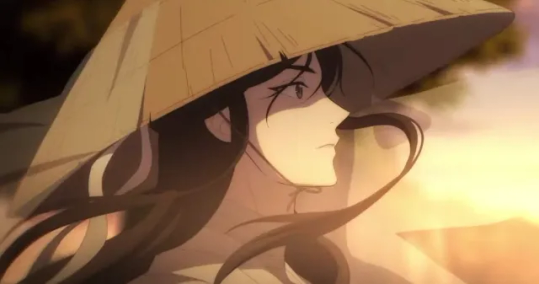
Okay so first: self-sacrifice. If fortune is limited, and the only way to make others’ lives better is to take fortune from someplace else, then there is really only one place you can take it from without hurting others—yourself.
So, part of Xie Lian’s solution is to take fortune from himself and give it to others. It’s why he asks for a cursed shackle that disperses his fortune, so that his fortune will naturally flow to those around him. It’s, of course, a very small thing. He is no longer playing God, or trying to “fix” the world on a grand scale. He is simply, in his own, quiet way, serving the common people.
My desire to give up meat and to spend more time on activism—these things feel like big sacrifices for me. And yet, they will have a very small impact on the greater situation in the world. They’re a drop in the ocean. I still want to do it, but it’s hard. It’s hard to care, or think that these things matter. Yet, this is the trade-off Xie Lian was willing to make. I really admire him for it.
I believe self-sacrifice is actually a really important, beautiful thing, that our society has forgotten the value of. We are individualistic—obsessed with our own wants. As I mentioned previously, our expectations have risen, so we buy and buy and buy. We are unwilling to rein in our consumption. I know a lot of people baulk at lifestyle changes as a solution to the climate crisis, and I agree that putting pressure on individuals instead of governments or corporations is misguided. But, first of all, there simply aren’t enough resources on earth to sustain our current levels of consumption. And, second… I don’t think we can completely let individuals off the hook. What is society anyway, but a collection of individuals? If we are going to address this thing, it’s going to take a massive movement—bigger than the civil rights movement or the works’ rights movement or the women’s movement. It’s going to take millions of people worldwide getting out of their own heads, their own lives, and concerning themselves with the greater good. That requires immense sacrifice.
Which takes me to gratitude. In order to be willing to sacrifice, you have to appreciate what you already have.
People often talk about gratitude these days as a path to mental health. Instinctively, it sounds like an uplifting, positive thing. And it is… but it also entails having a relatively negative worldview. It means remembering all the horrible things that exist in this world which we are lucky enough to avoid on a daily basis. You stepped in some dog shit? Well, that sucks, but you could have stepped into an open manhole and broken your neck! So! That’s something to be grateful for.
We are all so lucky. I’m sure everyone reading this has pains and traumas and challenges. This isn’t to diminish those, but, I hope, at least we all have at least one person to love. That’s all Hua Cheng had, and it’s what kept him going. Just one person was enough. And most of us, I hope, get to eat food every day, get to sleep in a bed, get to play video games or read novels or write poetry when we are sad. Not everyone gets those things.
Xie Lian, of course, was the king of low expectations, because he knew his future was going to be bad. He had intentionally accepted bad luck for a lifetime. So, there was no point in hoping for things to get better.
I think this attitude is best shown by his interaction with the Venerable of Empty words. The Venerable of Empty Words feeds off people’s fears. But Xie Lian didn’t really have any. When the Venerable of Empty Words warned him that his hut will collapse in two months, his response is, “Two months? If it’s still standing in seven days, then it’ll be a real miracle.” Because his expectations are so low, he’s essentially immune to fear. I can’t help but think that if you could really think this way, it would be a kind of superpower. It reminds me of the famous quote by spiritual teacher Krishnamurti, “Do you know what my secret is? You see, I don’t mind what happens.”

And so Xie Lian is okay with everything. He can sleep anywhere, crash boulders on his chest for money, not eat for three days, regularly suffer corpse poisoning, and still be okay.
Which leads to my third point: purpose. Xie Lian is able to endure such hardship because his expectations are low, but also he knows all his suffering has a purpose. “If I am to become a God of misfortune, then so be it,” he says. “As long as I know deep down that I am not.” He is okay with being laughed at or avoided for his bad luck, because deep down he knows he is doing the right thing. People can withstand a great deal if they feel their suffering has meaning. In Man’s Search for Meaning, the psychiatrist Victor Frankl’s writes about the horrors of living through a concentration camp, and how over and over, it was creating purpose that allowed him, and others, to find motivation to survive. Which I think has an important lesson for self-sacrifice. People are willing to sacrifice a lot, if they feel their sacrifice has purpose.
I get it when MXTX says that she is not a guru, and maybe it’s a lot to ask of a danmei novel to take spiritual advice from it. The book wasn’t necessarily perfect, and I do have some critiques (which I was gonna add here, but this thing is already wayyy too long). But… I do think I found something really meaningful in this story—some inspiration. I want to follow Xie Lian’s example, and live with gratitude and acceptance, while keeping my faith in doing the right thing. In other words, WWXLD! (What Would Xie Lian Do?)
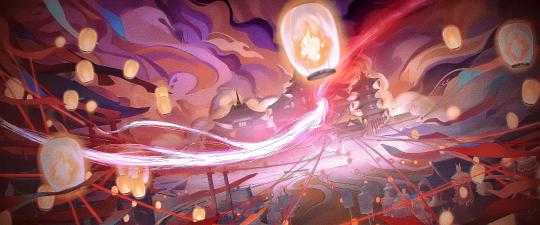
#tgcf#mxtx#heaven official's blessing#tgcf meta#tian guan ci fu#climate change#xie lian#hualian#danmei#chinese bl
87 notes
·
View notes
Text
PLAYING: Oddworld: Munch's Oddysee

It's taken me some time to start the game. I'm enjoying it without being super impressed.
I love Oddworld Abe's Oddysee on PlayStation 1. Its' perfect in every possible way. Even load times. How? because the load screen tells the player to get over it. Anyway, knowing that the series was intended to be a Star Wars-esque universe of unique stories and characters, playing Abe's Oddysee really pumps one up for that vision (New 'n' Tasty, not so much). Munch's Oddysee, so far, fails to carry us forward on that promise.
The original Abe's Oddysee made a claim that each game would feature a unique protagonist. But the success of the game led to a request for a direct sequel with a short turn around time. Enter Abe's Exodus. The game expands on the familiar formula with good feature updates but also breaks the promise of a unique story/experience. I kinda enjoyed it, from what I remembered, but in the same ways the themes, characters, and gameplay was reused--so was the humor. Instead of being a succinctly perfect experience, it was an overlong encore. It's been decades since I've played it, so my memory could be way off.
Anyway, Munch's Oddysee seemed like an opportunity to put us on track. Originally the game was advertised for PS2. I have recently learned that PS2 "tech demo" was a pre-rendered visualization of what the game could be. It presented itself as a tech demo showing off features, when it was actually a publicity stunt to secure funding. Either way, I was excited by the visualizations promise: a fully 3D game with new ways to play. I was less excited by the return of Mudokons. Don't get me wrong, I love Abe and his people--but I had hoped we were moving beyond that, as promised.
The game half-way delivers on that promise in that you switch between Abe and Munch. This potentially allows us to explore new ways to use familiar Mudokon gameplay mechanics in a 3D space while also trying to branch out. We'll see how well that succeeds.
I'm also going into this game with some baggage. Oddworld Inhabitants betrayed their PS2 fan base to make their game an Xbox exclusive. The assumption at the time was they got paid-off:
Given the original vision of Oddworld, I could see where you'd want the extra cash to provide exceptional storytelling and production value. But it also means that this game deserves extra scrutiny. Personally, I think abandoning the most successful home game console in history (and the established fan base) set Oddworld on a path of ambiguity and failure that has seen the franchise struggle to meet its promise and potential. And as I play it now, I'll be considering:
Could this have been possible on PS2?
Does the Xbox provide anything the PS2 couldn't?
Did Microsoft's cash lead to a well produced product?
My hypothesis is 1) Yes, 2) not really, 3) No.
The opening scenes are very reminiscent of Abe's Oddysee. That's good wink to the fans, but once again chains this game to a more original experience. Familiarity is comfortable, but it's also a little unexciting. Kind of like how many of the new Star Wars films/shows try to maintain that 80's aesthetic. It's instantly familiar and recognizable, but also boring. Episode 1 did a great job changing the design to feel different based on the new species and planets featured, but also recognizing that this was a different decade and era--things are not going to look the same. It's really sad that no other branch of Star Wars has been able to outgrow this narrow view of Star Wars design.
Anyway, same for Munch's Oddysee. It looks like 3D Abe's Oddysee. The fact that it features Abe and Mudokons means that's probably how it needs to be, but fails to deliver on the promise of fresh experiences.
Now the opening story (yeah, we're still at the beginning), the story follows the environmental themes of the original: good. But the pacing is horrible. I'm not sure what happened because Abe's Oddysee was near perfect. The little cut scenes were well timed, the visuals were engaging, and Abe told a good story...that rhymed. Every shot in Munch's Oddysee overstays its welcome. Once Munch gets trapped, screen direction tells us that he's looking at an approaching light overhead--but the edit shows that this light is actually far away. Someone didn't take film courses before being in charge of editing.
Next, we cut to Abe hearing about Munch's plight. the creature telling the story is a great, new thing, weird and wonderful in an Oddworld-way. But the fact that we switch to Abe here once again removes us from this being Munch's story. It's once again the Abe-show and failure to deliver on the original's promise. Next, the creature falls asleep and many Mudokons moan as they walk off. Once again the shot overstays its welcome and there's no significant story beats or clever humor that makes the stay worth it. It likes comedic punch. It's like All That during the final seasons--no ideas and just wearing silly clothes as though that "counts" for comedy. I think the problem is the game is trying to make you laugh while Abe's Oddysee was trying to tell a story. AO could have lacked all humor and been a great story still. It wasn't the humor that made that experience. Instead, it was the great story and production value that made the humor work. It reminds me of Edgar Wright films. Those movie's best comedic moments come from telling a story, and not bending over backwards to create ridiculous situations.
So now we start playing as Abe. First of all--fuck the movement. Abe moves at a brisk pace. There's also a run button. But if you're moving down hill, Abe picks up a LOT of speed. This could kinda make sense from a physics perspective, but 99.99999% of all 3D platforms do not change your character speed while moving downhill (or not significantly). So there was a real struggle to get used to the sudden speed changes. Next--the jumping is awkward. Abe leaps pretty high into the air, but gravity is such that he doesn't get much hang-time. Most 3D platforms are a tiny bit more floaty--which allows the player land their jumps more accurately. It gives you time to think about your next move after you land. So far, it's not been a huge issue, but I don't love it.
The game also introduces collectibles: Spooceshrubs. They're green fungus looking things that grow on the surface. Except they don't look natural at all They look like designer put them in very specific places. This is disruptive for a couple of reasons: 1.) it looks totally unnatural and so reminds us that this is a game with rules and currencies. 2.) it adds a tedious layer to the experience not present in the previous game. Truly, why is this time of currency necessary? I sit because you couldn't think of interesting things to give the player to do, so you forced a basic, decades old collection mechanic on them? Collection like this (Mario's coins, Banjo's Notes, Crash's Wumpa Fruit, and Spyro's gems) are all about moving the player around the environment: to challenge you to explore. Abe didn't collect coins, though, he collected Mudokons. A mechanic that's very much at play already. So there's no need for this.
A matter of fact, the better collection mechanic is shown in the game. Abe has to enlist the help of Mudokons to open barriers. He needs three mudokons to chant a gate open, Mudokons to fight off enemies, and Mudokon to activate electrical currents. Exploring the environment to find Mudokons is sufficient to challenge the player to explore, and collecting "enough" mudokons to open gates is enough currency. If a mudokon dies, you can resurrect them by paying spooceshrubs--but why put the player through that? It's a waste.
Now let's touch on graphics and level design...
The graphics and level design appeared to be tied together in mutual self-destruction. Like Jack and Rose both trying to bet on the piece of wood after the Titanic sank, but because neither will sacrifice themselves for the other, they both struggle to get out of the water and die. See, this is where the BS around focusing on Xbox starts to infuriate me...
Being that this Oddworld Inhabitants first fully 3D game, I'm not surprised that they didn't knock it out of the park--but I am very disappointed. Firstly, there's fog. FOG!!!
The purpose of fog is to hide pop-in. PlayStation 1 fans are very familiar. It was also present on N64, but less so. And even games without fog would still have character/object pop-in (Banjo Kazooie). The move to PS2 was meant to be a move beyond the limitations for PS1. Not every game could achieve that (Dynasty Warriors), but there was a concerted effort from the best studios at the time. The reason I hold MO accountable to the fog issue is because so many great 3D adventure games on PS2 avoided fog. Grand Theft Auto 3 for example. Here was a giant open world with three islands. You could stand on one island and look all they way across to the other. This islands are pretty big too! While there was vehicle and character pop-in, there wasn't much in the way of environmental pop-in--which helped the world feel large. Also, Jak & Daxter featured a semi-open world--and they were able to show off environments that were very far away. They did it through some clever placement of walls and mountains and reduced detail, but they avoided fog for levels as big as or bigger than MO. So I'm having a hard time accepting that fog was necessary. It just shows a lack of technical and graphical fine tuning that takes a major hit on the production value of the game and makes me question what going to Xbox exclusive actually provided on a technical level.
Maybe it wasn't the performance of the P2, but performance of the development.
That's kinda harsh--but also kinda true. I'm sure the team was doing their best, but this was simply new territory and they were not prepared. In a sense, they set themselves up for failure. Look at Naughty Dog's Crash Bandicoot. For the time, that was a great looking game (and the design still holds up). But the programmers had to pull out every trick in the book, and invent some of their own, to get this very simple game to look as good as it did. That's production value. That's saying, "Our game looking, playing, and feeling good on the surface is key to making it great". Crash Bandicoot is also fun. All the prettiness would have been meaningless if it wasn't fun. But there's a balance, and they walked it perfectly. And you saw through the franchise how they grew in both gameplay and graphics--always balancing fun and production value.
Munch's Oddysee is more focused on fun (I think). The team just couldn't deliver on graphics (whether it was time, money, or talent--I don't know). So to be the next step in the Oddworld franchise and basically presenting a weak tech demo as a finished project--it's quite disappointing. This is almost like going from Starship Troopers 1 to Starship Troopers. Now that's kinda not fair, because jumping from 2D to 3D brought unlimited challenges--but not being prepared to mitigate those challenges and present one of the best looking games of that console era meant letting down the spirit of the franchise.
And I feel confident the team could have done better. I watched some raw-ps2 playthroughs of Jak & Daxter and Just Cause 1. JC1 is a huge, open world game. It doesn't look beautiful, but the draw distance on the environments is massive. You can see for miles. I think the game opens with a sky-dive and you can faintly see all the islands of this huge world from hundreds of feet up. That means fog shouldn't have been necessary. While Jak & Daxter may not attempt the gameplay depth of MO, it does have great animations and design. The cliff walls are not flat surfaces, but bumpy blocks that take up dozens of polygons per squar meter. Whlie Oddworld features very rough, unnatural walls acting as obviously constraints to guide the player. There was an attempt to make the ground walls not so flat by stretching a few vertices into odd angles. But unfortunately it also stretched the pixels, which once again hurts the production value.
Really, the team just needed to redesign areas to hide the draw distance and other limitations. Naughty Dog is great about using the environment to hide draw distance limitations and it makes the game feel more impressive--even if it's a little more claustrophobic. Another issue while playing as Abe, we seemed to be up in some mountains. And instead of showing us a distant valley, kind of like Halo, they put ugly clouds/mist just below the cliffs. It's not only obviously hiding limitations, but it's ugly.
Gameplay wise--this area was ok. It's a training area, so hardly challenging. You collect enough Mudokons to chant barriers out of your way. Basically finding a key to unlock a door--if the key were broken into 8 pieces and each was able to talk.
After the Abe Training I did the Munch training. This started with a really bad video explaining how Munch was equipped with sonar so he could fetch captured critters for the badguys. The seen was irreverent way over stayed its welcome. Once again, the developers were trying to be funny instead of just telling a story. So it was cringy and a waste of time.
But once I started playing as Munch, I felt the graphic designs had improved. The team is better at making rusty, industrial interiors than organic outdoors. This is unfortunate. I think taking lessons from Jak & Daxter would have helped. Like the wooden structures in Jak feel like they're made up of individual logs of various size and shape. It's simple detail that took a lot of time to do, but makes the game more engaging and immersive. While Munch's Oddysee has a flat rectangle with log-texture painted onto it. So when you look at it, you think: "That want me to see this as a wooden ramp". But you don't buy it as a ramp--you just accept it. The Jak games do a much better job here.
Alright--that was a lot. I probably only played an hour or two, but I've spent more time writing this. There was some things I wanted to say that I don't hope to repeat. So far, I just don't think Oddworld Inhabitants were up to the task they set for themselves. They likely either needed more money/support, or to focus on a smaller experience. Fully breaking from Abe and Mudokons might have helped--since the designs wouldn't be compared, even subconsciously, to the great work in Abe's Oddysee.
2 notes
·
View notes
Text
Kraid!
KKKKKRRRRAAAAAIIIIIIDDDDD
I was trying to avoid as much of Metroid Dread as possible to be surprised... But then I learned KRAID is back, in glorious HD as part of a mainline game and...

Oh, he’s beautiful!
Seriously, I’ve always wanted to see more of Kraid! Dude was one of the OG Space Pirates alongside Mother Brain and Ridley, who are present throughout the series; And as someone who is apparently Ridley’s Brother-in-Arms, I’m just really curious on what he could be like?
I doubt we’ll get much if anything in terms of personality, but that’s how Metroid games work anyway! Hopefully we get more lore on Kraid, how is he still alive? Does he have regenerative abilities, is he just really incredibly durable? An X-parasite imitation? Fake Kraid has grown up and this is Sclayd? Did the Chozo clone him, maybe even somehow resurrect him from a dead body, or even the afterlife considering their borderline mystical abilities???
Either way, that’s clever of the designers to have Kraid be restrained, as a meta explanation as to why he doesn’t just charge forward- Thus allowing the developers to start off with a traditional take on the Kraid fight... But since he manages to break an arm free in the trailer, the fight might progress and get more deadly, as Kraid becomes more free.

His neck brace will probably be the last to go, to show a sort of natural transition from the traditional style of Kraid fights, to a more modernized take and I am all FOR it! Everyone’s wondering if Ridley will return, but Kraid alone would MORE than make up for his absence, especially since Ridley is already so prevalent while Kraid has only gotten bread crumbs and the Brinstar Depths stage in recent years!
This is like a dream come true... And obviously Kraid is set up to fight Samus, but it’d be kind of neat to see an arc where him and Samus recognize a mutual enemy in the Chozo, and work with each other over it? Probably not, but I feel this would be more plausible than Samus and Ridley working together; A fun thought exercise I’d always entertained, but there really isn’t that personal vitriol between Samus and Kraid.
...I mean, there COULD be if Kraid takes Ridley’s death personally, but who knows, he might hold off on revenge just long enough for a practical escape! Regardless, I utterly adore just how gnarly and twisted this guy looks, it reminds me of Ridley’s Smash Ultimate renders that really modernize his look, breathe a new and alien life to it while still being the same! And the added, slimy body horror, borderline insectoid, like Smash Ridley!
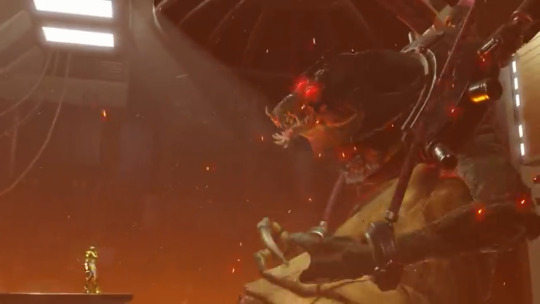
But yes, I appreciate Metroid Dread taking the opportunity to be new, instead of trying to cater to the mainstream audience as an official return to pull them back, especially since we already had Samus Returns do that, especially with Proteus Ridley being thrown in! And with how Proteus was by far the best Ridley fight in the series, I can’t WAIT to see how Mercury Steam gives a new action to a Kraid boss battle!
And it looks like there might be a passageway behind Kraid that he’s guarding... Kind of like his previous appearances, I love Kraid being a giant guard dog- His girth and weight alone makes him an impenetrable wall! Plus he gives immovable object vibes, VS Ridley as an Unstoppable Force.
Ridley moves fast and aggressively leads the charge, while Kraid is less mobile, can’t even fit through most passageways; But holds down the fort and line of defense, tanking damage and shrugging it off compared to someone who heals from it!
Seriously, this is great seeing this under appreciated Space Pirate represented! I’ve always been salty about Meta Kraid being left out of Metroid Prime... And Kraid’s got a distinct identity of his own as one of the biggest bosses in the entire series by a long shot!
His big, colossal, green and chunky frame, that brutishness to Kraid, the size and brawn- It’s a nice contrast and foil to Ridley’ who is memetically huge in general, but from a relative standpoint averagely-sized as a boss, and MUCH scrawnier than the Awakened Behemoth; But he makes up for it wit speed and agility, flight, etc.!
Plus the concept of taking on a full-on Kaiju of the series, Metroid’s Godzilla... I always felt like there was a wasted potential to Kraid and how he stood out as a counterpart to Ridley’ more of the lumbering mountain to scale compared to the acrobatic Cunning God of Death! His Kaiju size, the way the ground could easily tremble from each footstep like Jurassic Park...
If Ridley is a Xenomorph, make Kraid into Godzilla and Rexy and every giant monster whose sheer scale inspires a horror based in awe, one that is huge and grandiose and demands attention and seizes all of it, gloriously basking in full view, in contrast to the more stealthy and subtle Ridley!
They’re both reptilian Space Pirates who debuted with the franchise, serve Mother Brain alongside one another as the two guardians to Tourian. And just like Ridley taking one of the recurring boss themes from Super Metroid and adopting it as HIS theme, Kraid seems to have done the same by Zero Mission!
Plus, Brinstar Depths, AKA Kraid’s Lair, is SUCH a metal soundtrack! It doesn’t necessarily apply to Kraid himself, but I feel like there’s an enigmatic personality hinted with the eerie, melodic tune of this theme... So as someone who’s tried to write him, mostly in my head;
What kind of person is Kraid? What archetypes and roles would he fit? As a more casual type of arch-nemesis, compared to the personal intensity of Ridley? A dumb brute, or smart in his own way? What personality and vibes would make Kraid’s Lair fit as a theme for him?
At the very least, I wonder if we’ll get Space Pirate lore, maybe even origins as to Kraid and Ridley’s species? They’re both huge dragons who took over Zebes... Could there be a connection between Ridley’s species and the Chozo? Will we get a bit of sympathy for Kraid, seeing him captured like an animal by the Chozo, perhaps to test experiments upon and clone?
Will Dread encapsulate the realization of just how much of a bigger scope villain the True Chozo are, experimenting on Kraid the way the Galactic Federation did with Ridley’s clone, another parallel between them? Will we explore the dark past of the Chozo, and a potential tragic look into Kraid’s species- So Samus has a better understanding of how her people have been terrible in many ways, even if that doesn’t at all justify Kraid the person’s actions?
Just... Imagine a storyline where Samus realizes that Kraid was made by the Chozo, or his species was, or they were genetically augmented or massacred, or something like that. Just a twisted moment of realization that explains but doesn’t justify. Which could lead to Samus and Kraid teaming up for a prison breakout at a pivotal moment, Kraid’s girth would make him a helpful ally.
Perhaps Samus could weaponize Kraid in the background to take the brunt of the True Chozo’s attacks, while she takes on the leader? Could he help with environmental terrain, blind to the background as a colossal feature of the environment, a kaiju briefly on your side?
Could we get a Kraid fight where he attacks from the background, instead of to the right? Will he ultimately die helping Samus- More for his own gain and revenge, but still? Maybe even leading to a reluctant salute from Samus as she recognizes them both as people captured, as experimented upon by the Chozo? Apologies for all of the fanon conjecture, my mind is racing...!
I think there’s SO much potential with Kraid and seeing him full, unadulterated HD glory... It’s glorious. It’s magnificent! This is a dream come true, and I hope Kraid finally starts to get the recognition he deserves! Even if he’s just A boss fight, I’m already sated and content here- And I can only imagine the new wave of fan content that will spawn for Kraid, as he’s recognized a defining moment of Dread!
Plus, I’d love to see people characterize and give lore to Kraid... All in all I am LIVING and in triumph here!!! I know I keep using this meme but
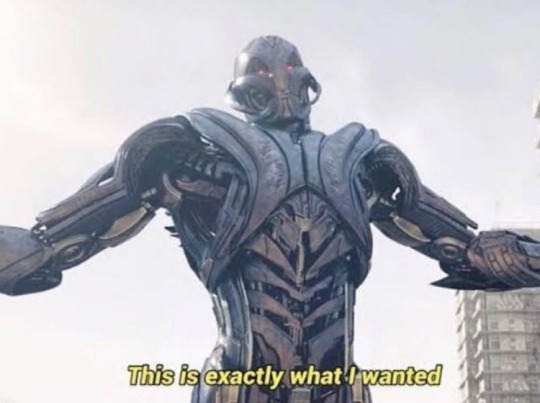
Literally this alone, just these shots... Are ALL I really want and need, in the end! Bless you Mercury Steam for this food, for breathing new life into this franchise while renovating what really needs it! I don’t even care if Kraid’s return is never really explained, I’m incredibly happy here!
This new design... It just FITS and works as a new, evergreen design for Kraid honestly! Compared to Ridley who is a lot more varied and arguably inconsistent, even with his Smash render... THIS is the new and definitive Kraid for me, now! I am having the time of my LIFE here!
Ridley the Cunning God has cheated death... is Kraid the Behemoth has reawakened!
(With the idea of Prime Kraid being reused for Metroid Prime 4... I’m wondering if we’ll begin to see an all new Kraid renaissance? 👀 More frequent content as Nintendo starts giving him and more appearances and attention, including in other media and advertising, alongside Ridley???)
52 notes
·
View notes
Note
What's your fave video game sountrack(s)? =^o
Ok that is a very loaded question so this is gonna be a long ass response, I hope you're prepared for what you've done.
(ok there's a tl;dr at the end if you want it sorry for this lmao)
FIRST POINT my immediate thought was the Ikenfell soundtrack (actually my immediate thought is I can't fuckin' choose they're all amazing but. then ikenfell). On the personal side, I was pretty much obsessed with the game for like three months straight, and i fuckin' love aivi and surasshu's music. I am also a simp for chiptune so jot that down. Moving past what may very well just be personal preference there are some incredibly interesting musical choices and impeccable choices story-wise that hit just. SO fuckin hard. Like emotionally. I won't elaborate on to the context and why the song works so well but the final battle theme is absolutely SPECTACULAR. (I could elaborate though so. ask if you will and i'll write another spiel on why it breaks my heart and soul). But also to reference a less-plot relevant piece I'm gonna bring up Alchemy is for Everyone. The squish bass sounds at the beginning are SUCH a fun environmental sound, it is really just NOT a sound I hear often which makes the track really stand out. And it fits SO perfectly for all the slimes and just. It's so WET. I love it. Makes me wanna wriggle. Which ok is probably also personal preference on reflection because my friend hates a wet song that I love but. Ok it's GOOD. Anyways continuing to the melody the fuckin PITCH bends. This is digital music at it's peak. We get the fun sounds. We get the fuckin pitch bends. Which are so fun because having slightly out of tune notes is such a fun feeling. It's a little off kilter, it's a little different. It's just SO funky and sounds so awesome to bend those pitches just a little bit, take full advantage of the medium and play around with it. Now I'm gonna talk a bit about why I love aivi & surasshu's music so much which. Ok so I believe(?) they coined the term "digital fusion" where you're mixing all these fun fresh digital sounds with real instruments/more traditional sounds and it can work SO fuckin well (for extra musical literature on this subject I'd like to suggest Yoann Turpin and specifically Chip Ship). Which we already get a taste of that where the pitch bends are playing on piano but it really kicks in when the violin takes over the melody and it's SUCH a graceful instrument in comparison to all this funky/awkward stuff we've had. The dichotomy is fuckin awesome. The violin is like a graceful victorian socialite ballroom dancing in after these pitch bends just pinned their arms to their sides and wiggled their hips around. We then get a third spacey instrument (I. have no idea what it is.) and it is. SUCH a switch. We have moved from awkward and stilted to almost too perfect and graceful (I forgot to write before but the high piano at the violin adds so much) to a moment of awe and discovery. We are now exploring the universe, the world of science and alchemy, and it is fantastic. The song almost seems to have it's own little narrative, and this is just a backing track for exploring one of the buildings!!!! This is within the first couple hours of gameplay, it is incredibly non-plot-relevant but SUCH a piece of art. I am absolutely in a slime ball watching amazing science happen so precisely and it is. so fuckin cool. And I could probably go off about every single other song, but in the interest of keeping away spoilers and finishing this post before 2 am, I will not. (Addendums because I can: this is less wet than the one my friend hates, and also this song is MOIST. I would also like to mention It's Showtime and Between the Lines as other song favorites but if I went into them I would never sleep.)
Okokokok. So. So SECOND point (I'm. so sorry.) I looked at my video game music soundtrack (I have two main soundtracks one for just every music but I didn't want to overwhelm it with VG music so I made one just for that that has ENTIRE soundtracks from almost every game I've played which. oops.) and I found two other contenders based mostly on I Really Liked The Games. The Oneshot soundtrack and the Night in the Woods soundtrack. Ok I'm gonna talk about Night in the Woods first cause HOLY shit. holy shit. The fucking astral songs. Those are fucking masterpieces. Such a simple ensemble but it creates such an INTENSE atmosphere. I really love instrumental music can you tell. I specifically want you listening to Astral Train for this one (played it for my senior recital and even though I had to play the violin part on clarinet I maintain it was one of the best choices I've ever made), but we the way the layers blend together is a fucking masterpiece. Since this song had to be designed so that any layer could play alone and each one could join in any order, each part of the quartet has to be interesting, but they still all must blend together and so they each get melody moments but the harmony/bass lines have to be interesting as well and. They ARE. This is such a hard task and it's accomplished SO. INCREDIBLY. WELL. (Side note: also makes for a good ensemble piece for, say, your and your friends' senior recitals, so everyone gets fun parts, a chance in the limelight, and a chance to rest, haha totally irrelevant note right there definitely no connection to my real life). With Astral Train we really get this cool ghostly train feel and through all the Astral pieces we REALLY feel the absolute intensity of Mae's dreams and the music creates such an immaculate vibe. It is unmatched. The rest of the soundtrack contains plenty of bops in a variety of genres too, where the bass songs have to be both playable and fun (Die Anywhere Else my beloved), and we get nostalgic and mischievous music fit for this ragtag team. This is the feeling I've had hanging out with my teenage friends at 10 PM in a parking lot. It is absolutely perfect for this video game. The music is SUCH a bop and really emotionally connects to me cause the game is such a bop of a plot. It is truly fantastic. (Addendum: Ok listening to Gregg rn and. Holy shit bop. I love him. I love this)
Ok now onto Oneshot, which, admittedly, does not have as strong a holding on the podium as these other two do, but curse me for having been emotionally destroyed by the video game because now I am emotionally attached to the music too. But, again, ATMOSPHERE. I am once again gonna be speaking in the interest of spoilers here, so I hope anyone who's finished the game will forgive what I'm not saying, but the entire landscape of this desolate planet is just SO much. The world is so simple and empty, and yet awe is often mixed with this feeling of despair. This is incredibly fitting for Niko, for the hopeful little pal they are, and creates an incredible effect. (I included specific song reccs for the last but I don't quite for this - so I'll just say now that I'm listening to On Little Cat Feet). The visuals are fairly simple, the map small, and just looking at the game the world feels incredibly small. But the music makes it all seem so vast. We really get put into Niko's shoes (or their little cat feet I suppose), and get to see this world for the vast, terrifying, but incredible place it is. The music makes you feel like that child seeing a new world for the first time, (this isn't spoilers past the first chapter but I'm warning you anyways) even though you are meant to be a god, you are still made to feel small and the world still large. The music does so much of this work, and it's incredible. Throughout the soundtrack the underlying angst, the despair, remains present, and the game has so much more impact for the music. No game is incomplete without it's music, and Nightmargin does a fantastic job creating this music for Oneshot. I haven't analyzed the actual music instruments/structure so much, but it's those instrumental sounds again tearing at my heart strings again. I would also like to recommend this game beyond the soundtrack, since it is an incredible story, with some puzzling gameplay, and it has made me feel how no other game has. It is a masterpiece of a game, and I implore everyone to play it through. Get hints if you need to, or play alone, just make it to the Ending. You'll know when you're there. (Addendum: I think I'm very repetitive here but I refuse to edit it so you have to live with this. Anyways gonna say it again: Play Oneshot!!)
Now I have chosen three game soundtracks that had a story that incredibly connected with me, and music to bolster that story and those emotions in incredibly meaningful ways. But there are so many others with great music, but that didn't necessarily connect on such an emotional level. Portal and Portal 2 have fantastic soundtracks, Celeste has beautiful music, Underhero has some funky and spectacular beats, Undertale and Deltarune are famously incredible (although I also did emotionally connect with them... but they're already talked about enough. Lancer beloved.), Clam Man is just. Fun., Oxenfree is also incredibly atmospheric and spectacular, Sewer Rave just has nice beats, and Minecraft is nostalgic as all hell. There are so many games to choose from, that from the moment I saw your question I knew I would be writing a far too long Tumblr post to answer you, because it feels an injustice to just answer one without reasoning, or without bringing to light all of the other amazing sounds I've discovered.
To finally answer your question, I think Ikenfell deserves the top spot in my heart. My instinct was right, there's fresh sounds, great musical structure (see: Between the Lines that I didn't elaborate on), incredibly emotional sounds, and fantastic storytelling within the soundtrack. But I love all of these other soundtracks, so I must bring them up. For they also have spots in my heart.
TL;DR - Ikenfell wins but I also love Oneshot and Night in the Woods and many others so I don't know what to say chief (lies i have too much to say)
#i will not apologize you brought this on the world by asking#i'm so sorry you had to find out i'm such a nerd This Way#i want to ask my friends to proofread this for legibility before posting but lets be real thats not happening. it wont be legible#so sorry about being this much of a nerd. not really but. wow that got long. mm vulnerability my behated#ikenfell#night in the woods#oneshot#only tagging those three cause theyre the ones i got too emotional about.#ok ok im gonna post this now lmao#wait am i legally allowed to mention blaseball cause the garages or is that not allowed#ok i think its not allowed#but the garages r very good i listened to the newest album today and *chefs kiss*
15 notes
·
View notes
Text
Patricia Highsmith: The problem of good art made by bad people

No writer would ever betray his secret life. It would be like standing naked in public.
- Patricia Highsmith, the novelist writing to a friend in 1940
Patricia Highsmith, who died in 1995 having written a series of psychological thrillers, including The Talented Mr Ripley and Strangers on a Train and the romance The Price of Salt, left two sets of diaries hidden in a linen closet in her home in Ticino, Switzerland.
In one she recorded details about her professional life: plot ideas, philosophical musings and thoughts on writing. In the other she documented her private reflections and memories, including a single sexual encounter with the writer Arthur Koestler (a “miserable, joyless episode”) and her efforts, through psychotherapy, to “get myself into a condition to be married”.
She had no more compassion for men than she did for women. In one entry Highsmith writes that “the American male does not know what to do with a girl once he has her. He is not really depressed or inhibited by his inherited or environmentally conceived Puritan restraints: he simply has no goal within the sexual situation”.

Highsmith’s diaries, which run to more than 8,000 pages, have been pored over by biographers, but have never before been made public, or in this case interwoven into a single narrative of the life of a complex woman who thought deeply about themes of good and evil, loneliness and intimacy.
It was in her diary that she described becoming sexually obsessed with a customer at Bloomingdale’s in New York, whom she later followed to her home, provoking observations about murder and love.
She had an obsession about detailing absolutely everything in her life, very much like Sylvia Plath. And she drew on the diaries for her novels, which explore the notion of obsession, guilt and murder, and reject rationality and logic for the darker elements of human personality.” Dubbed “the poet of apprehension“ by the novelist Graham Greene, who said she “created a world without moral endings … Nothing is certain when we have crossed this frontier”, the Texas-born Highsmith was deeply influenced by European existentialists such as Albert Camus and Søren Kierkegaard, and those influences are deeply felt in her diaries.
She was a lesbian who hated women, totally politically incorrect in lots of ways, and certainly not a poster girl for the feminist movement. She hated blacks, Jews, men, and women. A sort of equal opportunities hater then. In mitigation Highsmith was self aware of her own beliefs and it mortified her and was a source of constant anxiety. She herself was fighting many demons including her mother’s rejection, an attempted seduction by her father as a child, and being sexually abused by two travelling salesmen. She had a tough life.
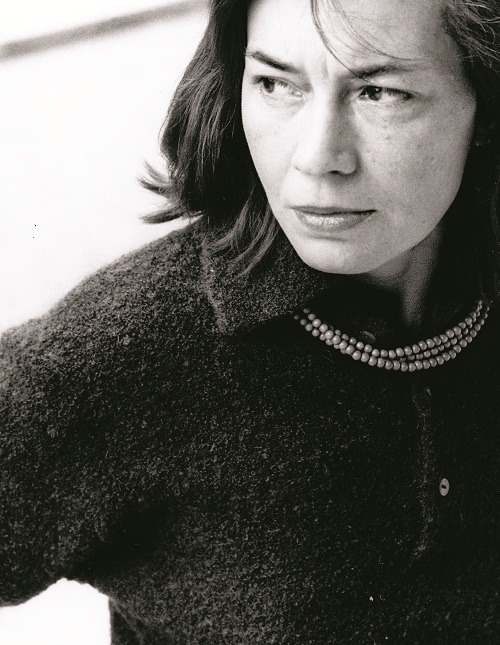
But there is a question over how far Highsmith can now be assimilated into contemporary culture of ‘wokeness’ and ‘MeToo’.
There is no question in person she could be a monstrous, violent and quite unpleasant woman. Knowing about her life and views could for some make it difficult to read her works. But for all that I think the diaries’ publication could help to again reveal that, contrary to popular imagination, creativity is not necessarily rooted in our best instincts.
These same highly culturally charged debates raged around the controversial French writer Celine in France. In Germany Wagner continues to be a touchy issue. Or back again in France, the recent controversy at the Césars where many people walked out as child minor rapist Roman Polanski was honoured for his latest film.
Going further back Gaugin was a pedophile. Degas was an anti-Semite. Caravaggio killed a man. Where do you draw the line? When do you draw the line?
Some argue art cannot be good or evil. Only the artist can. What he/she presents as art is a different dimension of thinking and somehow not really representative of the artist. I’m not entirely convinced by that argument. If only because great art is never transmitted through an empty vessel but is actively germinated through the life experiences of the artist. But also more importantly most artists don’t separate themselves from their art as they are convinced their art comes from the deepest depths of their being.
We don’t have to be puritans to acknowledge that some henious actions deserve more consideration than historically allotted to a consideration of the artist and his/her works.
But those who are ‘woke’ liberal left activists arguably seem to be advocating a one size that fits all approach. There is no wriggle room for discourse correction or allowing nuance to inform the conversation. And I use the word ‘conversation’ deliberately because such things are nearly always being worked out in real time and also each one of us ascribe different values to different things e.g. Picasso cheats on his lovers and so I don’t like his art, whilst others would say, so what? Grow up. There is a serious slippery slope that if you eliminate the bad artist and writer from the canon and you might as well eliminate art and literature itself. And that’s where we might well end up.
I believe that adjusting personal behaviour seems much easier than enforcing an interpretative cultural lens on a shifting audience and telling them this is how you should enjoy art.

I personally believe it’s a matter of personal conscience and conviction. If you’ve really searched your heart, and found that a piece of art is just that important to you, as many people do without admitting it out loud, then it should be fine to engage with it. But the imperative now is to privately think about why it matters to you. If I can justify that to myself then yes, I will go ahead and ‘enjoy’ that piece of art regardless of how much of a shit the artist was or is.
To me it’s not a question of compartmentalising, of ignoring or suspending my disgust with an artist's personal behaviour so as to concentrate on the art. I'm watching and reading because I expect art to be about moral dangers in a way that is less didactic than essays are. I expect art to be troubling because I expect people to be troubling. I am prepared to like and dislike something in every work. I can also appreciate the aesthetic genius of a moral monster without feeling that I am becoming inured to monstrosity.
For this reason when I for example look at Benvenuto Cellini, creator of Perseus With the Head of Medusa, was a murderer and a rapist. He killed at least two men and was accused by a model of sexually assaulting her. This does not stop me from looking with great amazement and curiosity at the naked and sexual Perseus With the Head of the Medusa. The knowledge of the immorality of the creator does not distract from my enjoyment of his creation; indeed I am made even more curious to know how beauty is perceived by a violently troubled man.
In the end for me, and I can only speak for myself, contrary to popular imagination, creativity is not necessarily rooted in our best instincts. Nietzsche said, “One must still have chaos in oneself to be able to give birth to a dancing star.” I like that.
A human creature born abnormally, inhumanly sensitive. To the artist, to paraphrase Pearl S. Buck, a touch is a blow, a sound is a noise, a misfortune is a tragedy, a joy is an ecstasy, a friend is a lover, a lover is a god, and failure is death. Add to this a cruel overpowering necessity to create - so that without the creating of music or poetry or books or buildings or something of meaning, his very breath is cut off from him. He must create, must pour out creation. By some strange, unknown, inward urgency he is not really alive unless he is creating.

In Patricia Highsmith’s case it’s revealing she said once in a sly backhanded way, “My New Year’s Eve Toast: to all the devils, lusts, passions, greeds, envies, loves, hates, strange desires, enemies ghostly and real, the army of memories, with which I do battle — may they never give me peace.” A true great artist never know really knows peace or contentment for this is the price of creation. The intensity of personal turmoil is the fuel of their creativity.
The Greeks may have believed that they had “muses” whispering ideas in their ears. Or that the Romans believed they wrote with their “genius”. But I suspect the best artists are those that are in touch with and confront their humanity, at their best and at their worst.
67 notes
·
View notes
Video
youtube
Mercury Prize 2021 – Ranking The Contenders
It is that time of year again – the season of the Mercury Music Prize. In the last few weeks, the albums nominated for the 2021 Mercury Music Prize have been revealed and, as ever, it is a highly diverse and eclectic list of some of the best British and Irish music released over the last 12 months – some familiar, some not so familiar. Each of these nominated records is now vying for the prestigious title of Album of the Year, the overriding criteria for which has greatly deviated throughout the award’s history.
Traditionally the eventual prize winner would tend to be a lesser-known record rather than what was necessarily the best album out of the 12, with the judges choosing to highlight the artist and record that may have been overlooked and needed the most attention. However, this has changed in recent years, with the judges choosing what has been widely regarded amongst music critics as the best album in most cases.
So, with the likes of James Blake, Michael Kiwanuka, Dave, Sampha, Alt-J and The XX being just some of the acclaimed artists that have taken the top prize home over the last decade, the big question is - who is in with the best shout this year of being named the overall winner?
In recent years a strong favourite has often emerged from the pack, but I must say I find the 2021 prize to be the most open and hardest to predict in years. There is no clear favourite this time around for me, which makes for an exciting and intriguing build to the September awards show.
Despite the unpredictability, as I do each year I’ve listened to all 12 albums and tried to rank them based on what I think are their chances of winning. To be clear, this is not a “Worst-to-Best” countdown – this ranking is based solely on how likely I think they are to win the overall prize.
To determine this, I’ve considered the front-to-back listening experience and the artistic achievement attained by the album, the popularity of the artist, how critically acclaimed the album is and how similar albums have fared in recent years too. So without further ado, here’s my final thoughts and analysis on this year’s nominees.
12. Promises by Floating Points, Pharoah Sanders & The London Symphony Orchestra
This collaborative release from electronic artist Floating Points, American jazz saxophonist Pharoah Sanders and the London Symphony Orchestra was one of the albums I hadn’t heard prior to the nominees being announced, so was pleasantly surprised by what turned out to be quite an interesting listen. Built mainly around a twinkly harpsichord and Sanders’ saxophone, the music builds to a swell at various stages before gently disappearing in the same subtle way in which it arrived.
That said, I would be very surprised if this album took home the overall prize and title of “Album of the Year” for several reasons. Firstly, this feels primarily like a Pharoah Sanders project, who is of course American and not British. Secondly, although split into nine movements this is ultimately one single piece of music and the Mercury Prize has always been about celebrating artistic achievement in the traditional album format. Based on this, I’m surprised it has even been nominated and I think this cancels this one out for me.
Of course, there is always a chance this could prevail on the night, but I think it would be too controversial and therefore highly unlikely to get the overall nod.
11. SOURCE by Nubya Garcia
This debut album from London-born jazz musician Nubya Garcia was another record I hadn’t heard before her Mercury Prize nomination, which sees Nubya take the listener on a journey throughout musical history. As she describes the record herself, this is “a collection of thoughts and feelings about identity, family history, connections, collectivism and grief.”
Now jazz records have always found a spot on the Mercury Prize shortlist with at least one record from the genre getting a nomination each year. However, the reality is that none have ever actually won the overall prize - even in recent years with promising efforts from the likes of Moses Boyd, Sons of Kemet and The Comet Is Coming in contention. So as impressive as Nubya’s debut is in parts, I don’t think it is the album to buck the trend.
10. Pink Noise by Laura Mvula
Singer-songwriter Laura Mvula is certainly a favourite with the Mercury Prize judges, with her third album Pink Noise representing the third nomination of her career, making her an impressive 3-for-3 so far. That said, Pink Noise is a very different record to her first two outings, with Mvula lacing these tracks with synths to give them a wonderful 80s aesthetic and neon glow. When combined with her traditional soul style, it does make for an enjoyable and fun front-to-back listen.
However, my biggest reservation with the record is that it’s not particularly ground-breaking – this is a sound that a lot of other artists have employed recently and had similar or greater success to what Mvula achieves here. With this being the case, I’m also putting this one down as unlikely.
9. Not Your Muse by Celeste
Brighton-born singer-songwriter Celeste has already proved herself a hit with critics, having been named as the BBC’s Sound of 2020 prying to releasing this debut album. Across the 12 tracks on Not Your Muse, Celeste’s powerful, beautifully toned voice takes centre stage, simply soaring amongst the glossy musical arrangements.
From the instantly recognisable groove of Stop This Flame that has been everywhere in the last 12 months, to the string-drenched majesty of A Kiss, Celeste shows off her full range with plenty of style and flair. This is an impressive debut outing to say the least, drawing natural comparisons to the late-great Amy Winehouse for her soulful voice and cinematic presentation.
Although I wouldn’t be completely shocked if Celeste was to walk away the overall Mercury Prize winner, I think the success Not Your Muse has brought her already goes against her case. With its release, she became the first British female to have a No.1 debut album in the last five years and she even already has an Oscar nomination to her name for Best Original Song. She’s also been featured on Sky Sports coverage all year, as well as high profile John Lewis and SuperBowl adverts.
Therefore, I think it’s safe to say Celeste’s career is already flourishing, so a Mercury Prize win for her would simply be another accolade rather than the career-defining moment it has been for other artists in the past, and would be for other artists on this year’s shortlist.
8. Fir Wave by Hannah Peel
Northern Irish composer, producer and electronic musician Hannah Peel makes for a fascinating entry in the Mercury Prize shortlist for me. This was another record that I hadn’t heard previously and took me by surprise, with Peel essentially reinterpreting 1972 album Electrosonic by Delia Derbyshire (famous for creating the original Doctor Who theme) and the Radiophonic Workshop.
Although this is based on source material, this is an entirely fresh composition with Peel’s style of electronica drawing comparisons to that of Mercury Prize alumni Jon Hopkins. Peel herself best describes the record as “The cycles in life that will keep on evolving and transforming forever. Fir Wave is defined by its continuous environmental changes and there are so many connections to those patterns echoed in electronic music – it's always an organic discovery of old and new.”
It is an impressive record, and I was quite torn as to where to place this one on the list. If the Mercury Prize decide to return to their old habit of giving a lesser-known record the overall nod, then Hannah Peel could well be the artist to benefit - but that hasn’t really been the trend in recent years. Additionally, Peel herself is a very successful composer who continues to score many TV programmes and films, as well as putting together orchestral arrangements for the likes of Paul Weller.
For me, the nomination for Fir Wave has already granted it additional attention, which I think makes it a winner already in that sense. It’s certainly got an outside chance for the overall prize itself but based on recent history I don’t see it being named as the winner.
7. As the Love Continues by Mogwai
At this point, ten albums and 26 years into their career, people just about know what to expect from Scottish post-rockers Mogwai, and that is soaring, grandiose instrumentals. Yet somehow with each new release, the band continue to astonish, taking their instrumentals into unchartered territory and leaving listeners in wonder with their colourful, breathtaking soundscapes.
Amazingly, As the Love Continues is the band’s first ever Mercury Prize nomination, which is quite incredible given the high standard of their output over the course of their career. That said, it is not surprising this is the one for which they have finally been nominated, as it is for my money one of their best releases.
From cathartic opener To the Bin My Friend, Tonight We Vacate The Earth, the acid-drenched industrial sounds of Here We, Here We, Here We Go Forever, and the dreamy, looping guitar riff and euphoric crescendo of Pat Stains, Mogwai’s touch for forging fascinating sonic textures hasn’t missed a beat. That said, it is the one track that contains clean vocals that stands out amongst the pack here, and that is the emotional gut punch of Ritchie Sacramento which sees frontman Stuart Braithwaite paying a beautiful tribute to all his musician friends that have passed away over the years.
This is still one of my favourite releases by anybody so far this year and my second favourite album overall out of the 12 shortlisted. So why only at No.7 you ask? Well, because sadly I just don’t see Mogwai taking away the overall prize.
Firstly, as well as their first Mercury Prize nomination this was also the album that saw Mogwai land their first ever UK No.1 album, so they are arguably more popular than they ever have been. Secondly and most importantly, the Mercury Prize has mostly favoured debut albums and younger artists throughout its long history, and I think Mogwai are simply too established and verging on legendary status at this point to get the win. So as much as I love this album, I think it’s likely to get overlooked in the same way Radiohead have been every time they’ve been nominated. Here’s hoping I’m wrong and left pleasantly surprised!
6. Conflict of Interest by Ghetts
Here’s another record where it’s quite puzzling as to which way the judges will sway on this one. On the surface, this third album from Grime MC Ghetts has all the credentials to be a Mercury Prize winner. With the likes of Dave, Skepta and Dizzee Rascal all amongst previous winners, Ghetts comes from a genre that has a winning track record, certainly in recent years as well.
The album itself is also mightily ambitious and grand in its scope, with each autobiographical, astutely written track seamlessly segueing into the next one. There are also plenty of moments throughout of stunning, cinematic orchestration that help to elevate Ghetts’ bold vision at various key points. Perhaps most importantly though, it is also one of the most critically acclaimed albums on this year’s shortlist, holding an impressive 95/100 on Metacritic at the time of writing.
However, as many reasons as there are for Ghetts to be a contender, there’s also some things working against him, which is probably why he’s landed at the midway point on the rankings. Firstly, I found the album was about 10 minutes too long and didn’t quite strike the same chord that Dave’s Psychodrama, or even Kano’s two recently nominated albums, Made In The Manor and Hoodies All Summer, have done previously. It’s certainly an impressive outing, but for me lacks the emotional punch of those records.
Also, as I said about Stormzy’s record last year and still rings true today - no album that has Ed Sheeran on it deserves to win the Mercury Prize.
5. Collapsed in Sunbeams by Arlo Parks
Into the top five now and I think here is the point where we finally arrive at what are the genuine contenders for this year’s prize. Kicking us off is young singer-songwriter Arlo Parks for her beautifully understated debut album, Collapsed In Sunbeams.
Parks said of the album recording process that she trusted her “gut feeling” a lot of the time, with most tracks “taking an hour or less from conception to end.” This is very evident across this raw, no-frills debut, where her wonderful soulful voice and honest songwriting are often the main attraction across the album’s 12 tracks.
Now, there is a lot working in Arlo’s favour when it comes to acts that historically win the Mercury Prize – it’s a debut album, she has her fans on the Mercury judging panel, and her success has been modest so far in comparison to some of the other nominees. That said though, the vital ingredient this album is missing for me is that grand ambition that recent winners Michael Kiwanuka, Dave and Sampha have all had – this is certainly a well-crafted record, but not necessarily one that will set the world alight and be talked about for years to come. For that reason, my gut says Arlo will be one of the names in the mix on awards night but will ultimately come up short.
4. DEMOTAPE/VEGA by BERWYN
For me, Trinidad-born rapper, producer, and songwriter Berwyn is the real dark horse amongst this year’s nominees. At just 27 minutes long, DEMOTAPE/VEGA is by far the shortest album on this year’s list, but nevertheless still manages to leave one of the biggest impacts.
Ultra-raw, brutally honest and charmingly homemade on his laptop, this debut is the perfect showcase for Berwyn’s talent. Across the album’s concise runtime, he carves out piano-driven R&B and Soul elements to backdrop his spoken-word style of rapping. To draw comparisons to other Mercury Prize alumni with multiple nominations, think James Blake meets Ghostpoet and you’re not a million miles away from Berwyn’s sound. For me personally, this album left a bigger impact in less than half the time of Ghetts’ whole album, thanks to cuts like the mesmerising and passionate 017 FREESTYLE.
Berwyn is certainly one of the artists on the shortlist that will greatly benefit from the extra exposure that winning the Mercury Prize brings so if you want to take a punt on an outsider, this would be the album I’d recommend backing.
3. For the First Time by Black Country, New Road
Much like Arlo Parks, experimental London rockers Black Country, New Road are another artist that have a lot pulling in their favour.
Another critically acclaimed debut and one that blends multiple elements from favoured Mercury Prize genres – post-punk, jazz, alt-rock, math-rock, amongst many others - to make a truly unique and bold sound. With razor-sharp guitar riffs, cutting lyrics and moments of seismic, horn-backed musical swells, this is a record that you can see easily winning over the judges on awards night. Although at times this is a record that’s easier to admire than it is to love, there are moments in which you can’t help but get enraptured, such as the wonderfully erratic Instrumental opening, the epic and meandering Sunglasses and the melancholic, romantic groove of the stunning Track X.
For me, this one is a genuine contender that I could easily see being named as the overall winner. In terms of things going against it, I would say it’s simply down to the fact that these next two albums are on the shortlist.
2. Blue Weekend by Wolf Alice
For me, the album that presents the biggest intrigue on this year’s shortlist is Wolf Alice’s Blue Weekend. This is because as much as there are factors working in this album’s favour, there is almost an equal measure working against this record winning the top prize.
Having released their debut My Love Is Cool in 2015 to much acclaim and their first Mercury Prize nomination, there was a lot of talk at the time as to whether the rock quartet could deliver with their eventual follow-up. With their sophomore effort, Visions of a Life, they actually went one better and won the 2018 Mercury Music Prize, achieving further critical and commercial success.
Now with Blue Weekend, the four of them have produced a record that has managed to exceed the high expectations set by the predecessors. At the time of writing, the record is currently sat on a 91/100 on Metacritic, with a 9.2 user score, suggesting widespread universal acclaim amongst both fans and critics alike – so it would certainly be a very popular winner. It also suggests that by all accounts, this record is a more significant achievement than the 2018 album for which they won the Mercury Prize.
So as the only previous winners on the shortlist who’ve also just created their best work to date, they’re a certainty to win the prize again, right? Well not quite.
You see the thing is with Wolf Alice, they have Mercury Prize history working both for and against them. On one hand, if Wolf Alice were to win, they would become only the second artist after PJ Harvey to win the Mercury Prize twice, and also become the first artist ever to win back-to-back prizes for consecutive albums. If they were to achieve this, I don’t think there would be any outcry from the public, as the consensus with Blue Weekend is that it is a very special album and would be fully deserving of such an accolade. However, to achieve this it would mean the judges doing something they have never done before, and something they have only ever done once previously.
Therefore, you must feel on the night of the awards ceremony, it will ultimately boil down to one big debate - Deserve Vs Need. With this album, it feels like Wolf Alice have finally evolved from Britain’s most promising young band, into Britain’s best band working today. They are at the height of their powers right now, with Blue Weekend landing them their first ever UK No.1 album, helping them to instantly sell out tours and catapulting them to festival headline slots. So ultimately, they don’t need the win like they did several years ago to take them to that next level.
That said, this is the best album on the list and feels like a generational record in the same way Dave’s and Michael Kiwanuka’s did the last two years. Just take a track like The Last Man On Earth for example - a haunting piano ballad built around Ellie Rowsell’s powerful vocals, that begins gently before eventually erupting into a glorious haze of soaring guitars and Beatles-like riffs. It is barely six months old and already this song feels like a timeless classic, and you can argue the rest of the album is the same. So, if any album really deserves to be named “Album of the Year” and make a bit of Mercury Prize history in the process, it is very much this one.
Which way the judges lean on this Deserve Vs Need debate I feel will ultimately decide this year’s prize, whether Wolf Alice triumph and make history or whether this next album pips it to the post instead. My gut says that the latter is more likely, but it makes for an exciting conundrum around this year’s winner and will have me rooting on the night for Wolf Alice to prevail.
1. Untitled (Rise) by SAULT
So here we are then, the album I think is most likely to take home the 2021 Mercury Prize…. and kind of predictably it’s the current favourite. Although it may be the boring choice to put this album first, analysing the chances of mysterious musical collective SAULT against the rest of the nominees, it is clear as to why they are looking the most likely at this moment in time.
Interestingly much like Burial when he was nominated back in 2008, no-one really knows much about SAULT other than the fact they make eclectic and vital music, with their identity still very much a mystery. However, despite their anonymity, the last 12 months have seen them create shockwaves throughout the music world, releasing three highly acclaimed and topically urgent albums for which they could’ve been nominated for any one of them. In fact, on Metacritic’s compilation of all critics’ Best of 2020 year-end lists, both Untitled (Black Is) and Untitled (Rise) landed in the overall Top 10, with the latter for which they are nominated holding an impressive critic score on the site of 93/100.
Whereas Untitled (Black Is) feels like the rallying cry, Untitled (Rise) is a record that celebrates black excellence, arriving in a year where the voice for racial equality has never been louder. Bringing together various elements of House, Soul, Disco, R&B and Afrobeats, SAULT have crafted a powerful statement through the pure majesty of their diverse sound. This is a thought-provoking and engaging album that will have you dancing one minute, then contemplating the state of the world around you the next.
Although it would be easy to say they have the benefit of collaborator and last year’s winner Michael Kiwanuka being on the judging panel, I think the real reason this SAULT album seems the most likely candidate is because it makes for essential listening that also perfectly fits with the Mercury Prize ethos. It is a musical collective still in their infancy, making important music that takes inspiration from a vast array of genres, as well as the current social and political climate around them.
Having listened to this record several times now, it is no surprise that many music outlets had this as their Album of the Year for 2020, and I would not be surprised at all to see the Mercury Prize give it that same accolade come September - if music really can change the world, then SAULT are leading the way.
#mercury prize#hyundai mercury prize#mercury music prize#wolf alice#sault#ghetts#celeste#arlo parks#laura mvula#black country new road#berwyn#mogwai#hannah peel#floating points#pharoah sanders#nubya garcia#best new music#albums of the year#album of the year
2 notes
·
View notes
Text
My personal 2020 GOTYs
1) Hades
This game, dudes. THIS GAME. A fraction of the budget, a fraction of the dev team size, reportedly HEALTHY development schedule and management...and imo it offers at least some of everything I want out of a single player video game. I have poured over 60 hours into this and I see myself putting in some more over time and ALL of the time I have spent has felt rewarding and edifying. Clever design, smart writing, organic voice acting, sharp gameplay, and all done at a fraction of the resources of these big budget, bloated games. You love to see it.
2) Final Fantasy 7 Remake (Part 1?)
I went into this year not caring much about this game at all. FF7 was a game I played as a teen, enjoyed, respected, and moved on from pretty easily. This Remake, so far, has done more than I could’ve expected in terms of actually REMAKING a game. It’s literally a new adaptation, and I as pleasantly surprised at just how hard it went. From realizing the world of Midgar into something so full of detail and plausibility, to reiterating and doubling down on its postmodern anti-corporation themes, to making Barret the character I loved the MOST somehow?? Combining everything I love about real-time RPG action with a tactical strategy element long missing from the genre, reimagining and fleshing out characters and concepts into something deeper and more meaningful...I’ve never considered myself a huge FF7 fan but this game was really something, and I absolutely cannot wait for more (and praying they do my girl Yuffie justice). I’ve been super skeptical of Nomura as a director given...the mess that has become Kingdom Hearts, but as it turns out, when he has others to reign things in, some surprisingly nuanced stuff for an anime game can come out of it. It has its flaws, to be sure, but it’s still the most enjoyable experience I had with a big budget game this year.
3) The Last of Us Part 2
I feel conflicted over this one in particular - I feel Neil is not longer a director I respect the way I did back with the first game. I feel Naughty Dog is falling victim to all of the late capitalist issues plaguing big budget game dev. But I also love this game. It’s much more flawed than the first, but that’s mainly because it’s more ambitious and complicated. It’s THE most flawed game on this game, honestly, but overall as a game I am compelled to respect its writing, its gutsier decisions, its art direction, acting, presentation, etc. It’s an impressive game and the most technically impressive game I played all year if not all generation. Props where they’re due, but at the same time, I think this game was poorly directed and I love it in spite of issues with its production, rather than because of some strong vision. That’s the big Sony bucks, I suppose, matched with a dev team willing and apparently somehow able to fulfil what they want to create. I still get the impression there was a bit of ‘design by committee for a mainstream audience’ kind of shit going on - how could there not with something this big? - and as a result I think the game is a bit bloated. Shave off about 3-5 hours from a few spots and it’d be a more focused game, and maybe I’d feel more edified and satisfied rather than weirdly conflicted. Even so, a huge accomplishment and I hope to see more games tackle premises as ambitious as this down the road.
4) Bug Fables
This game technically launched last year but it debuted on console in 2020, and I didn’t play it until then. This is as close to a follow-up to old school Paper Mario as it gets, while simultaneously doing a lot to forge its own identity and even improve on the formula presented in the previous games. Its rough around the edges but that’s mainly because it’s an independent game, and it’s amazing just how well the dev team was able to reproduce the scope and details of this specific subgenre of RPG, all while continuously implementing new game design elements and multiple features that make it feel more modern in its direction. Fantastic stuff, I’m still not even finished with it because I’ve been taking my sweet time, though I intend to finally finish it this month, and I have to say, it’s quite a special game in my opinion.
5) Fall Guys: Ultimate Knockout
Absolute banger of a multiplayer game, really love the presentation, the concept, the overall execution, the way the team has been updating the game every month or so in response to feedback and implementing new content. So good to see the battle royale genre FINALLY pushed beyond just...arena shooting. Can’t wait to see where else this game can go over time.
6) Animal Crossing: New Horizons
Somehow this one slipped my mind when I first wrote this up, despite having poured well over 100 hours into it this year. I think part of it is that New Horizons did a lot of things I’ve wanted the series to do for so long, and yet is still far behind in terms of so many other things I wish they would do. Quality of life things prevent me from really re-investing into it, and yet despite that I have to admit it REALLY sucked me in for a solid few weeks and I continued to play off and on for months. It was the perfect game we collectively needed right when it came out and graphically I can’t think of how to really improve on that style. A really relaxing getaway I needed earlier this year, though like with previous AC games, I don’t find myself going back to it as much as I’d think I would.
7) Going Under
A surprise hit for me, this rogue-like swooped in from ‘heh that looks amusing’ to ‘oh wow this is legit just a great game.’ Its weird visuals, funky 3D gameplay, and surprisingly sharp storytelling make for a rogue-like unlike any other and one totally near the top for me.
8) Marvel’s Spider-Man: Miles Morales
Squeezed this in just this past week or so, and this one also satisfied me greatly. I wish we’d see more big budget open-world games like this -- laser focused, not wasting any time, and not being repetitious aside for completionists. So cool to see another team’s take on Miles after how much I fell for Into the Spider-verse, and very glad the team both homages that movie while subverting some expectations fans of the film might have, all while continuing to adapt Insomniac’s take on Spider-Man from a couple years ago.
9) Demon’s Souls (Remake)
As a big fan of FromSoft who never got too far into this one originally, it’s been great to visit it as if it’s a new Souls game with an alternate art style. And a very clean art style it has. This was a good pick to be remastered because many, even FromSoft fans like myself, missed out on it, and it feels unique from its predecessors while still showing a solid foundation they’d go on to build from.
10) Crash Bandicoot 4
An amazingly well done follow-up to the original trilogy, this game GETS what makes old school Crash games good, and it improves upon things in a number of ways, from making Coco the alternate hero, bringing back old faces in new lights, going ham with the visuals both in raw art and unique filters when replaying stages, and giving incentive for completion with so many great costumes. Well done, great old school platforming with modern design sensibilities.
Honorable Mentions:
CrossCode
This also technically launched before 2020 but I didn’t play it until this year, and I don’t think it hit consoles until this year. I wasn’t exactly sure what to expect going in, just remembering that I had enjoyed the demo well enough. This game delivers in most ways you could want from an indie game, with an expansive world of sidequests and RPG growth, a flexible combat system that can be nailbiting and engaging, and old-school dungeon designs with lots of environmental and elemental puzzles that really ask a lot of you. All of this capped with a surprisingly great narrative with characters I grew to love, including a much needed protagonist with a unique identity unlike any in games that I’ve played, as well as extra bits of detail and production values invested at JUST the right moments where the story needs it the most. It feels a bit tedious at times and part of me wishes more of the sidequest content involved direct interactions with the named, recurring characters, but it’s still one of the most impressive and well-done indie games I’ve ever played.
Katana ZERO
Razor-sharp game design, this one. It’s a brief but intensely focused experience that feels like the video game equivalent of a slick, experimental indie film. Could do with some more replayablity for those who want it but what’s here is just damn good and I gobbled this game down like a fantastic, hand-cooked meal at an atmospheric dive bar barely anyone knows about.
Necrobarista
Haven’t quite finished it yet but this is definitely one of the best visual novels I’ve ever experienced just due to how hard it goes on presentation and pushing for a more cinematic and thoughtful vibe than any other VN I’ve ever experienced. The characters and writing feel ripped out of an early 2000′s webcomic, for better and for worse, but all the same, it’s some fantastic stuff and it’s so refreshing to see a game set in Australia tackling a well-worn genre by giving it a new spin.
Slay the Spire
Another personal pick since this released in 2019, and I’m not quite sure which consoles it hit or when, but I didn’t get into it until early this year, and was totally hooked. Fantastically addictive, probably the most well-design deck-building rogue-like I’ve seen, certainly one of my favorite deck-building games in general. Apparently I’ve sunk 50 hours into it this year, more than most on this list, and I wouldn’t be surprised if that number spikes up again at some point.
6 notes
·
View notes
Text
Let’s talk.
So I’m currently replaying The Last of Us Part II.
Full game spoilers below (also I wrote too much so be ready for a rambling essay as well)
As I’ve said before, I really don’t understand what is “weak” about this story. I’m already picking up minor things with Abby that I couldn’t have necessarily noticed the first time around.
[imagine an abby gif here because apparently there aren’t any with the tumblr search and I’m just ready to post this]
When we see her, she’s dreaming, and it’s not a good dream. We now know it was likely of the SLC hospital corridor, where she discovers her father dead (that we play through a few times later on). Clearly she is still haunted by it.
I noticed this next thing once I figured out what her tie to Joel was, but obviously the reason why she’s so hyper-muscular is because she’s been constantly training with one eventual goal in mind: killing Joel. She’s seen his work and knows it would be a fight, so she focuses her time and effort on the preparation for this moment, should it ever come.
One thing we get to see later on with Abby is that killing Joel didn’t suddenly solve all her problems. It likely really wasn’t worth it over all. But not being blinded by rage and revenge allowed her to become involved with two Seraphites, Seraphites she likely would have immediately killed if she wasn’t walking around essentially purposeless.
Her dreams don’t stop, and they get worse before they get better. But she gets reminded of her original purpose as a Firefly, and she’s able to embrace her father again, alive.
Ellie suffers from something similar, but she hasn’t gotten her revenge yet. She’s still consumed by what was consuming Abby at the start of the game. Ellie behaved much the same as Abby when she abandoned Jesse to pursue Abby directly (like when Abby kept insisting that this is what everyone wanted, Joel’s long and protracted torture).
It’s the same thing that doesn’t allow her to be satisfied in what should’ve been an idyllic, productive life with Dina and JJ. When Tommy returns and reminds her of her desire for “justice” and revenge and provides her with an outlet for it, she jumps at it. She never would’ve been satisfied without resolving what she thought she couldn’t live without dealing with. Even with the cost being so high, she can’t help it (or really, she’s choosing not to help herself get over it).
Her rage is what drives her to Santa Barbara, and it’s what keeps her going when she’s essentially a dead woman walking, a grievous wound in her side and almost no fight left. She should’ve stopped ages ago, but that blind fury just keeps her going.
We eventually see Ellie grow in a way that is different from Abby. Abby got to have her revenge and had to realize it didn’t really help her get over her father’s death like she thought or expected. She found something with Yara and Lev that used to be gone. Lev seems like her conscience in a way. An innocent in all this, he forces Abby to reconsider all her assumed biases in relation to the Seraphites and even the WLF.
Ellie, however, ultimately never gets her revenge, because she eventually realizes it’s not worth it before she gets to that point. We see a flash of Joel that isn’t dead, and it’s not entirely clear to me yet what shifted, but possibly seeing the fight completely gone from Abby and forcing her to do it anyway may have made her realize how one sided this became. Abby was broken, and Ellie was very nearly there herself. I’ll be thinking about this for a while still to figure out what I think happened. But that’s Ellie’s growth. She stops herself.
She grew into a menacing figure like Joel or Tommy, using their tactics because she felt like she needed to (which is probably what they told themselves too), but eventually realized the error of that. It probably didn’t feel good to try to kill someone who didn’t care about the fight or rivalry anymore.
All I’m trying to say here is obviously this isn’t a weak story if there’s this much discourse possible. You can say you don’t like the themes, or wish it was about something else, but that doesn’t make it trash. I fully expected to hate this Abby character (as what got spoiled for me besides Joel’s death was how much people seemed to dislike her), but honestly I love watching her growth. She’s a foil to Joel more than a foil to Ellie, and I think it’s super interesting to watch. She cares about Lev the way Joel came to care about Ellie, and I don’t understand what the hang up is.
As a last note, Lev is the soul of this game and I wouldn’t have it any other way. I adore him and it hurts every time I remind myself how young he is. Just like Ellie used to be. Ellie’s encounter with David was heartbreaking, and Lev had to deal with his own mother’s blind rage towards him. I can’t imagine what that was like and honestly I’m a little glad we didn’t have to watch such hate happen and only encountered the aftermath (which was difficult enough).
There’s a reason the main screen becomes Abby and Lev’s boat beached on the shore of Catalina Island once you finish the game.
More than willing to discuss this massive game with whoever. But don’t yell about it if your only encounter with the “weak” story is some leaks. If you’ve never played a Naughty Dog game I can almost forgive you for rushing to judgment on the game because of the leak of cutscenes, but in case you didn’t know, about 80% of the game is actual gameplay. There is the combination of environmental storytelling, character banter and interactions, and the physical stress of actually playing through the game that you will never understand from a leak tied to cutscenes (or skimming through a let’s play).
If these leaks never happened, I fully believe people would’ve been miles more receptive to Abby as a whole. But instead, people made judgments based on the leaks and refused to budge from them once the game actually released because who ever wants to admit they’re wrong? And then of course once it became clear that a majority of critics did not agree with them, they review-bombed on Metacritic and turned to being disgusting to game journalists and reviewers, insisting Sony paid them for that perfect score. (Seeing Huber from Easy Allies open up on how hard it’s been to deal with was super depressing. Why can’t people be better?) It’s absurd and it’s always been a conspiracy-type argument that holds no water, but people still bring it out when it suits them.
As for Joel, remember Tess? “We’re shitty people Joel, it’s been that way for a long time.” Why are people so surprised about Joel’s eventual fate? Still don’t get it. I was heartbroken for sure, and I cried like a disgusting baby as it happened, but it doesn’t mean I can’t understand narratively why it happened. Even more so once we find out how Abby fits into the whole thing and why it was her specifically torturing Joel and not the others.
Do I appprove of torture? No. Do I understand her pain? I like to think so. I’m a pretty empathetic person (pisces, what can I say?) so that’s not difficult for me to do. I felt the way Ellie felt up to the switch in perspectives to Abby, and even a bit into that. It took a while for me to warm up to Abby but once I did I realized what Naughty Dog (and more specifically Neil and Halley) wanted me to see.
The game being referenced as a study on hate, the tagline being ‘how far would you go if someone hurt your loved one’ (I’m paraphrasing here) makes it incredibly obvious about the overall themes, but it’s presented in a way that’s literally designed to make you uncomfortable. You don’t want to be Abby now, she just killed Jesse and possibly Ellie, and you’re left on that terrifying cliffhanger to do the most menial of things as a character you probably want to see dead in that moment. But the time spent with Abby is so worthwhile. It adds weight to Ellie’s actions and shows how far gone Ellie has become, and you are forced to deal with the thought that Ellie might be the villain here. Which is the whole point.
None of this is to say that Abby is a saint, it’s just showing two characters at different stages in the cycle of revenge and violence. Ellie does return to the farmhouse, where she knows she should’ve been all along, and I can only hope she wanders off to find Dina and JJ and apologize, but we don’t know for certain. I can’t wait to finish it all over again.
#okay this is way too long#I'm sorry#the last of us part II#the last of us part 2#the last of us 2#tlou II#tlou 2#the last of us spoilers#the last of us part 2 spoilers#the last of us part II spoilers#spoilers
15 notes
·
View notes
Text
Lost Legacy Exemplifies Naughty Dog’s Cultural Crisis
There’s a discussion about Ocean’s 8 that positions its existence around whether or not it's necessary as a counterpoint to the Ocean’s reboot - the Ocean’s Cinematic Universe - if you will (what a world we live in) - that it was only made as a gender flip of the reboot that spawned two sequels, three films in total cast almost entirely with men.
My perspective is that as much as I generally enjoyed the Ocean’s reboots for what they were, Ocean’s Eleven should have been a cast entirely with women in the first place.
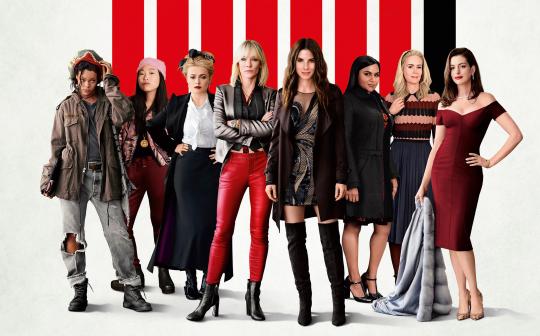
The heroes we both need and deserve.
Massive spoilers for the original 1960 Lewis Milestone version and the Steven Soderbergh one in 2001 of Ocean’s Eleven - Soderbergh’s flip is of-course that they get to keep the money at the end so that they have to potentially give it back in the sequel he knew he’d be able to make, whereas I doubt Milestone knew he’d ever get a sequel back in the early 60′s so the rub for film-making back then is to burn the money at the end. Nevertheless even for the early 2000′s, the boldest of moves would have been to cast it with women, not to be progressive but also to be progressive, tho that’s still an absurd thought that to cast women is progressive - but to be smart. Ocean’s 8 is a fantastic film, deftly written, paced, acted, shot and edited. Would the world have responded to it in like-kind? I know how *I* would have responded to it, I think you can answer for yourself how societal cultures may have responded at any point from 2001 thru to now. In any case, I have Ocean’s 8 on blu-ray. I love it.
A reader asked me whether I’d played Uncharted: The Lost Legacy after kindly reading through my bludgeoning of Uncharted 4, and seeing as they were patient enough to endure that blood-letting, I felt I owed them and probably Naughty Dog the time of day to give Uncharted-And-A-Half a chance, and I’m really glad I did. Fair warning, there’s a lot I didn’t like about Lost Legacy, and there’s going to be some more pain - a lot of pain. I don’t think any of my tumblr audience is quite on the rest of my socials, but anyone who’s connected to me anywhere else on the Wire was subject to my frustrations as I played thru the game on Saturday, including the blurred image of my Google Keep notes I took while playing the game in preparation for this journal. I keep notes now.
Nevertheless, I can say that on the assumption that the Uncharted series is wrapped, or at least in the narrative arc with these characters as we know them, that Lost Legacy is easily without question my favourite Uncharted game by far.
On that assumption that Uncharted is more or less done, now’s as good a time as any to take a top-down look at the franchise as a whole. I know I already did a fair bit of that in the last piece, but some broader thoughts on what the series does and says have solidified while playing Lost Legacy, and I’ll discuss them as a lead-in to my thoughts on the game.
Again - this is going to be riddled with spoilers for Uncharted: The Lost Legacy and most likely the entire Uncharted series, so if you’ve not played them and are interested in doing so, or don’t want to see them heavily critiqued, please stop here.
The first game was released in 2007 and was apparently in development for roughly three years. What was happening up to and around 2004 to 2007? September 11 had happened in 2001, the world was at war in the Middle East in Afghanistan and second invasion of Iraq had begun in 2003, Hurricane Katrina happened in 2005 - the same year the IRA ended armed conflict in Northern Ireland, 2005 saw the outbreak of H5N1 Avian Flu - topical right now. There are so many more, I can’t list them all here - lots of momentous events that in some way or another highlight community awareness in some way - that’s probably a bit of an obtuse statement but hopefully it’ll string together in a sec. What struck me and a bunch of my friends odd about the first, then the second and then somehow every Uncharted game since, is that Naughty Dog seem to choose an ethnicity for their antagonists and scratch the surface of “what if this element of their cultural violence is bad”, but then leave it so shallow that it remains a caricature and comes off as casually and carelessly racist. The first game frames the theme around Nazis, but the actual enemies are anything but. Yes, they’re intended to be mercenaries, but they’re hardly nondescript, they’re absolutely of very specific ethnicity.
From the second game onward, Naughty Dog seem to want to make use of real world settings and do some nuanced research on actual sociopolitical conflict and I always feel uneasy about how its presented. Lost Legacy begins much the same way and I worried about the tone going in. An active war-zone in India as gravitas to your setting that is then almost completely abandoned until the very end? This is my problem with how the writers treat setting in Uncharted. They use very real conflicts that have real-world consequences for people in which actual lives are lost to inject gravity into their narrative and then quickly discard it for the sake of shenanigans once the wise-cracking starts when the tone shifts gear and the characters themselves take centre-stage in the foreground.
Here’s the thing.
The character’s are enough. I *love* these characters. Their story is fantastic. Nadine’s and Chloe’s story was the best and most cohesive of the entire series. Also it only took me roughly six hours to play thru and I only feel like half of that was wasted! That’s still probably being too generous but I’m grasping for positives, here. Still - I don’t know why the senior production team has never had confidence in the core of their product which is the charm of their characters and the play dynamic - Uncharted is primarily about *seeing* and *doing* - for the most part, unfortunately, separately.
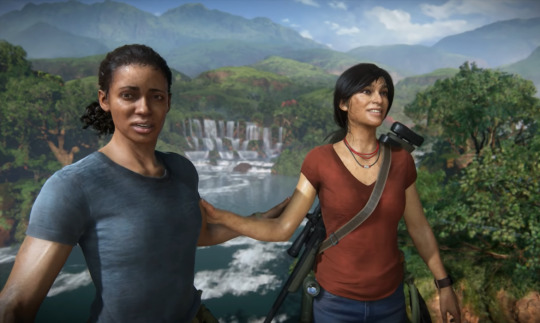
The dialogue between Chloe and Nadine is extremely interesting, it is absolutely the best thing in the game, yet it keeps getting interrupted by stupid gameplay beats due to poor timing of rolling up on level locations. Uncharted 4 was supposed to have locations hidden around levels where you could engage in dialogue between characters but I barely found them - why hide such interesting content in your game?? It’s completely absurd. Then the only few I did find were between Elena and Nathan altho I really don’t think those were meant to be hidden, and they were so poorly written and I hated them so much, I didn’t care to discover any more. Again - no disrespect at all to Nolan North and Troy Baker whom I absolutely adore and respect, but I didn’t find anything engaging or interesting *at all* about the brother narrative. I didn’t care one bit what that nonsense was about. What about Sully? Where’s Sully’s story?? I’m just so - so glad we got a story for Chloe, and that at least Nadine got some great screen time too as a part of it and that it all presented so well.
Before I continue to praise what went well, there are a few things I can’t let pass. While the driving has thankfully improved and controls quite well now, the exclusion of a minimap or GPS HUD element is interesting. I’m fairly certain it’s intentional as to not detract from the game’s clean, cinematic look, to not break immersion, but this just generates a horrific breakdown in actual player experience for me. Without any navigational assists, I constantly got lost and stopped every 20 meters to check the map, frequently driving into dead-ends, off cliffs and past where I wanted or needed to go. The game isn’t a 30 hour open-world experience with distinct and varied landmarks the player will familiarise themselves with and learn to navigate by, for the most part the level is fairly homogeneous in object geometry.
Some of the puzzles take far too long to mechanically execute, in particular the smashy-slashy statue block jumpy stupid whatever it’s called one and the sliding shadow motif. It doesn’t matter that neither actually takes too long once you know the solution, it’s that they feel long and then are actually over-long and also not interesting to mechanically execute. This is due mostly to clunky character animation and animation smoothing, and part of Naughty Dog’s overall obsession with being cinematic which is something I’ll return to towards the end of this piece, something which has been a strength but will ultimately be to their detriment. While cinematic visuals might be a benefit for traversal, it’s something that absolutely does not suit puzzle-solving. In the example of the statue-block puzzle, the hard reset each time the player is hit means laboriously jogging all the way back to the beginning and starting again - it’s just poor puzzle design having to begin again from a full reset. There’s no satisfaction in having to remember the whole thing and while I didn’t look up the solution online, I’m willing to bet many people will have just dialled up a clip on YouTube and copied it without figuring it out themselves. This is a failure of connecting what’s satisfying about moving in your game and what’s satisfying about solving puzzles, something Crystal Dynamics understood far better in the Tomb Raider reboots, in particular the second outing (Rise of) with their much more environment-centric puzzling.
The sliding shadow puzzle just simply takes way too long to jog around the space, then clip onto the hot-zone for each lever, wait for the animation to lift it, wait for the animation for the pieces to slide, rinse, repeat. Once you know what you have to do, it’s overly frustrating actually having to do it.
It brings me to a weird quirk of design where the puzzle designers perhaps don’t understand something that the environmental designers do. Maybe they didn’t get the same little notes in the Slack channel, or Trello board or Teams pin or whatever. Uncharted level-design has almost no back-tracking, less in each successive game, and it’s almost entirely absent from Lost Legacy - you’d have to look closely to realise you’re navigating the same area you came in thru and almost always moving over it in a different way that’s been modified - now it’s flooded, now there’s a bridge, now you’re swinging or leaping or climbing where you weren’t etc. I feel like this is the Hidetaka Miyazaki Souls/Borne effect of level design in which environments are designed to be both realistic and practical.
Great! Good for the level designers. Did the puzzle designers not get that note? Maybe they did. I need to stop thinking that every poor optimisation is a symptom of ignorance - that’s bad form on my part. What’s more likely is it’s a symptom of either bad leadership, poor tool implementation, lack of time or too narrow or strict an observation of representative vision - by which I mean - they can’t change the way the characters move or animate just for puzzles, because it has to be consistent with the cinematic representation of the game as a whole - and that sucks lemons. It means the overall play experience suffers for the sake of the overall cinematic experience except executing a puzzle isn’t cinematic unless it’s expansive...
Like the positive example I’ll give of the light reflector room. Shoplifted from Uncharted 2′s giant knife that has Nathan climb all over a giant knife, Lost Legacy’s light reflector room has slightly less climbing but is a much larger space, more impressive and a much better example of good puzzling in Uncharted. It’s not difficult to solve but again (I think again?) I’ll argue that you don’t come to Uncharted for difficult puzzles - you don’t come to Tomb Raider for difficult puzzles, either.
The puzzles in these games should be mostly environmental because they feel good solving them, and solving them should be more about the doing - the playing - and the playing should be moving - running, jumping, climbing etc.
Both the giant knife and the reflector room are a joy to execute because they’re fantastically realised - large cavernous environments that aren’t annoying to navigate, that give you time to appreciate both the scale of the spaces and the details the designers and artists have put into them. Lost Legacy’s is more impressive because you do a lot more puzzling and spend much more time in its vastly larger space, culminating in combat that usually I would be ho-hum about, but I guess exhibits more animation and destruction tech which while scripted, is still impressive nonetheless given how extremely difficult it is to have interactivity still occurring.
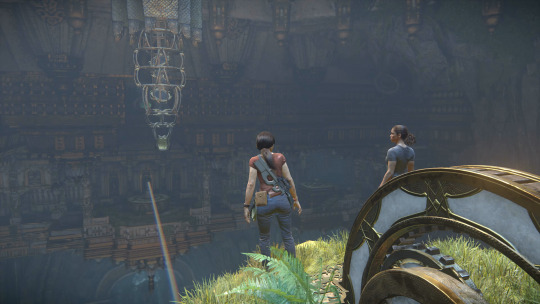
I have a few things I want to mention before I begin to wrap up, given it’s going to be a very long wrap - I’d say I’m taking cues from Joseph Anderson but I’ve always been this verbose.
The medallion puzzles were excellent, in part perhaps because they felt like the closest thing to the Tomb Raider reboots’ challenge tombs. Some of them were silly and lazily implemented, the worst offender being you just had to shoot mans and get the medallion from the lock-box that the mans had put it in (pfft), but the best ones were integrated into the environment such that you may well have walked past or thru areas that were puzzles before you knew what they were. This brings up one of the most interesting things I’ve been turning over for quite some time now. Ben Croshaw aka Yahtzee aka Zero Punctuation may have first mentioned “chest high walls” in his first Gears of War video, but it may well have been an Uncharted game. I don’t remember but he will have thrown in mentions of all the generic cover-shooters as a catch-all for how the environments immediately telegraph that Combat™ will happen. It’s a particularly astute remark and speaks volumes of video game design - developers always seem to have very specific design language to separate traversal, combat and puzzling. While I clearly don’t care for combat most days, and yes - I do acknowledge there are some practical concerns for combat that can’t be avoided, I always envisaged design that blurred the lines between puzzle and environment so that you never quite knew what was and wasn’t a puzzle. Everything should be the puzzle. In some senses, Cyan’s old Myst games were a bit like this but in a very rudimentary and crude way - sure, they’re quite old now, but even those had very clear not puzzle areas. It’s a complex and subtle subject, but something of a study of games like Fireproof Games’ The Room would be in order. Understandably smaller scale, but the thinking behind it is definitely adjacent.
Final notes - the young Indian girl in the prologue has amazing animations that you’ll miss entirely unless you swing the camera yourself. A whole team of people or a single animator has spent hours on those animations - that a director or team leader hasn’t forced the player to see and appreciate them is a disservice.
Every section where you have to do something under pressure like run from mans shooting at you or dash through a lengthy section of crumbling cave network etc. is a horrible play experience of not knowing where to go. They’re trying to inject excitement by applying pressure but there’s no clear guidance and no dependence on player skill, so you end in bizarre fail-states due to going in completely the wrong direction that glitches cameras or scene time-outs resulting in check-points and the whole thing just doesn’t scan as a cinematic experience. I hate hate hate them - you’re subject to the same musical swell that’s supposed to be like a movie only to fail again and it comes off as b-grade and pathetic. Every game has had this problem and it is just straight bad design.
Three? Four? Games in a row, Naughty Dog have recycled;
being pursued on foot by an armoured vehicle crashing through level geometry while you have to run and occasionally shoot/fight mans,
driving down a shanty-town on a hill pursued by an armoured vehicle - perhaps the same one as previous scene
a big chase scene of lots of vehicles jumping from vehicle to vehicle shooting and/or punching mans that may or may not include...
a train combat sequence where you start at the back of the train and work your way to the front of it shooting mans as you go
This lacks creativity at this point. I think duplicating these once each - so you do them twice total across the franchise is fine, but they hit the same beats in the same way - exactly - every time they appear. It just strikes me as Naughty Dog just not knowing what else to do. At one point, I think it was in Uncharted 4, when driving down the shanty-town on the hill, I literally had a brain-fart not knowing which game I was playing because I swear we did it in 2 and 3. Did we do it in 3?? Look, I don’t know. But it’s getting old. At least we didn’t do it in Lost Legacy, but we did the train and I’ve had enough. I’ve had enough of doing the same things in the same way. It could have been a train but it should have been in a way that just wasn’t just another Uncharted train. It hasn’t worn thin, it’s worn out.
Overall, the games look great... but playing them feels like they’re stuck in PS2 and early PS3 era philosophies, like Naughty Dog haven’t evolved and don’t realise that people’s brains function much quicker and can process more, or that the media we consume, the games we play function at a higher level and we can digest more, we’re capable of processing higher functions. I’ve been playing Ubisoft’s The Division 2 and enjoying it more the more I play, much to my surprise. I understand the intent behind the gameplay is extremely different to the single-player experience of Uncharted, however there are some parallels in what it achieves animation wise;
The Division is also a cover shooter but of-course as a multiplayer, open-world live-service game, its intent is to telegraph to the player that the entire environment is a permanent play-space in which to always be playing. It utilises an information-rich GUI that is an always-on system with button icons telling the player what button to press over what surfaces to snap to, vault over, climb up, run to (and snap to cover), open and loot, interact with etc. I don’t know if these can be turned off but I like them on. It’s a pretty amazing feat that almost every environmental object has been mapped as a snap-to-cover and/or climbable object. For this reason, the character movement in Division is pretty quick and snappy, however it still manages to have a decent degree of natural human kinetics in the character rigging which is amazing. This means if you move-off from standing still, there’s a slight delay as your “weight” shifts, same if you change direction. When I say “snap” to cover, it’s not actually instantaneous, your character makes a movement and takes time to do so, yet it’s still not sluggish. Somehow the developers have worked at fine-tuning a balance between not-instant, but not too slow.
This is something that even in Lost Legacy, I feel Naughty Dog simply can’t do. The animations are decent during play - they’re outstanding during cutscenes (we’re getting there), but character models have a really awkward relationship with the environment. They clip awkwardly with ladders and buttons and wheels - with puzzles and levers - getting the grappling hook to prompt is again better than Uncharted 4 but still not ideal. I had far fewer glitch-outs than 4 too, which was a significant improvement, but I still had to animate back and forth a few times to get into hot-zones appropriately and with character kinetics not quite right, it wasn’t exactly easy.
And again to be fair, this stuff is suuuuuper difficult. I don’t mean to talk about this stuff like it’s cooking instant ramen. It’s so freaking tough. Rigging and mapping interactive character models has to be one of the most stupendously difficult things a developer has to do - making it work with all that scripting, getting it to play nice with all those assets and lines and lines of coding for the full experience. I have so much respect for game developers and what an astronomical task it is. So when I say I prefer one development team’s product over another’s, I don’t mean to say that the other team is absolute garbage - there are so many things that might contribute to that final product and we have no idea what’s been going on at Naughty Dog. If the team leaders and producers say they’re happy or even if they don’t, and the decision is made to ship, there’s nothing more they can say or do.

If there was one thing I absolutely loved about this game, it was the two main characters and the story that was told about them. I can excuse the main text as the catalyst that brought them together - even to the point that it’s a story about Chloe ultimately deciding what’s important to her. My issue with this comes full circle with the setting being in a real world conflict. There’s a bit of white savour complex in there in that Asav might be the narrative’s antagonist, but he at least is local. It’s not clear exactly what Chloe’s ethnicity is and I’m not here to judge what her stakes are in it because clearly her character has a sense of home and place in India, but she certainly also has a complex sense of being an outsider. So the point is not to judge, but the game also is unclear on its positioning other than she’s the heroic vehicle of deliverance. See what I mean about theme? This is what I mean by you could have just as easily written almost an identical story about Nadine and Chloe, with very similar interactions, tension, redemption and resolve - even with an antagonist, conflict and a happy ending, but either treated real sociopolitical issues with better care or not set your game in them at all. I’m all for setting games in the real world, but if you’re going to do it, do it right. I’m not the person to ask.
I need to be careful not to direct that criticism at the base-level developers nor at Claudia Black who is the manifestation of Chloe’s voice because she does an amazing job of bringing her to life. The casting of Laura Bailey voicing a black South African Nadine was much more awkward given Nadine’s ethnicity wasn’t decided when she was cast - again that’s on Naughty Dog’s leadership, but I won’t knock Laura Bailey for it. It’s easy to say she should have resigned, perhaps she should have, that’s an economical question only Laura can answer and I’m sure it’s not an easy one. Suffice to say, VO work isn’t lucrative.
What a side-track.
I don’t think I ever cared about Nathan. I think I always cared about Elena, and not because WAIFU and also not because WHITE KNIGHT or whatever other bullshit reasons stupid alphagamerz will spit from their frontheads. Elena’s just more interesting, probably because Nathan is written like a design document and Elena’s written like a human being. Naughty Dog want to create a game about adventuring with lush expansive environments, shooty mcshooting and light puzzling. They want it to be cinematic and unrivalled in its quality and they have the smarts to build the tech around it, with Sony’s help. Backed by Sony money, they take VO seriously and do a great job at creating that cinematic experience, coupled with some above-par for video games narrative writing. The problem this introduces for me is Nathan’s raison d'être has to justify everything - action, tension, stupidity...
Nathan Drake really is the design document.
I feel like he’s just the unfortunate side-effect of being central to the game, and it’s typical of my character to just not dig the focus of things and get into subtexts a whole lot more. Often I get into things in the periphery, things adjacent - I don’t love or hate Shakespeare or for that matter Baz Luhrmann but Romeo + Juliet ‘96 is an amazing film and not at all because of the eponymous Romeo and Juliet and again, not for Leonardo di Caprio (spit!) or for Claire Danes (she can stay) but the absolutely divine cast of supporting characters (John Leguizamo will live in my heart forever oh baby).
That Nathan makes stupid decisions is already something that turns me off. That he makes poor decisions because... he’s an orphan? Because... he was bullied? Because... his brother left him? This is why he’s not transparent with his wife? Actually, he’s quite realistic. Except the people like him I’ve known in my life aren’t heroes - they’re pathetic or unreliable or abusive or dangerous. Elena is an adult. She’s not perfect either and that’s also great because neither am I. As a side character she has the conceit of being more nuanced, but as the contra to Nathan, she’s also mature versus his childishness. OOOOAAAAH EVERYONE LOVES A LOVEABLE MANBABY OOAAAH COMEON LIVE A LITTLE EVERYONE’S GOT A LITTLE CHILD STILL IN THEM SOMEWHERE yea fine, I get it, like I’ve said before, yes - he embodies the recklessness and playfulness in us, but that’s a confusing position for a game that frequently tries to ground itself in real world conflict to be taking. You’re reducing him to that but injecting complex and nuanced characters like Elena and now eventually both Chloe and Nadine? I’m telling you now - any male that doesn’t know when it’s appropriate to grow-up, when the time to set aside the playfulness and be TRUTHFUL AND TRANSPARENT WITH HIS PARTNER is a dangerous person and FUCK THAT NOISE. Nathan, as much as I do absolutely - make no mistake - adore Nolan North’s voicing - ends up being another Homer Simpson - as long as you laugh at his stupidity, you’ll excuse it, and you’ll excuse the hurt that’s done by it, and that shit doesn’t fly with me. His redemption was not earned. I say again - Elena should throw him into the sea.
Nadine ends up being a fantastic character, even if she’s given less narrative time, she’s a great example of her behaviour telling more story in contrast to Chloe getting to reveal her past and it’s nice to see them play off one another. I feel Nadine and Chloe as characters hit great story beats in ways Nathan didn’t get to with pretty much any of the other characters in four games - not Sully, not Elena, not his brother, not even Chloe - all told, we never actually get any back-story on Nathan and Chloe and I think we’re better off for it because I don’t care.
Having a quick squiz around tumblr reveals the obvious and rampant shipping of Nadine and Chloe and I couldn’t be happier. I think Naughty Dog knew what they were doing. There were so many moments. Those moments were for us. I think they were subtle enough that the fragile manbabies would have missed them but there’s no fooling us. Some of the babyboiz would have been seething thru their mouthbreething hairmouths and I’m sure probably took to the internet but that’s OK, they can remain unfucked incels for the rest of their lives or worse, serviced by whatever unwashed creatures want to dare fondle them in the dark. The elephant ride and that whole conversation was almost enough for me to forgive the absolute disaster that was Uncharted 4. It was given enough time to breathe, it was absolutely beautiful, and just when you thought they were going to terminate it and apologise for making things too awks, it concludes just perfectly and you get a phone picture that doesn’t have Nadine in frame, yet her presence in that picture is definite, pervasive and emotional. Again, some people may have completely missed it and maybe it chalks up to life experience, but as completely contrived as an artefact of complete fiction as that whole sequence might be, it was one of the most wonderfully tender moments ever created in a video game and I wonder if it makes the whole affair worth it.
In the Uncharted 4 piece, I threw in a few barbs about the most meaningful interactions, and in Lost Legacy, what I really loved was Chloe taking photos of things she thinks are beautiful and interesting on her phone, and feeding the elephant - these were the most meaningful interactions in the game. I love that the photos on the phone didn’t serve any gameplay utility at all, they were there because her character wanted to document her travels, because she thought what she was seeing was cool, and any time in the game, you could pull out your phone and look at what you’d seen. It was such a good and important decision to have the very first picture to be the Indian girl in the market, as that rather than the local conflict, does more to ground you and Chloe as a character in the setting. The game never forces you to look at it as a reminder, but you know it’s there.
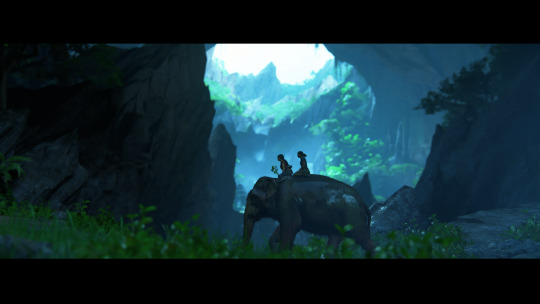
I did steal these from the internet, sorry - so if they’re yours, let me know and I’ll be happy to take them down - this one in particular, seeing as it’s a photomode capture. I should have taken my own but I don’t do photomode caps on my first play-thru and there’s no-way I’m replaying this ever again.
It took five games for Naughty Dog to finally get some decent character writing, but a part of me still feels they couldn’t have existed without all the dross of the other games. There’s this immense amount of back-story and labour both the developers and the players had to slog thru to get to this point, and I feel as tho we get here and there’s just too little to show for it. I still really enjoyed the story that was told, the sense of character I felt, but a lot of that was contingent on the Uncharted universe in situ. Lost Legacy feels like a combining of all of Naughty Dog’s narrative motifs - the earnest redemption, the moment of tenderness and connection centred around peaceful animals - it’s a greatest hits of Naughty Dog in the best way possible because each narrative beat hits perfectly. I’m glad I played it with two characters who endeared themselves so much to me, that I truly cared about.
I’ve spend a lot of time praising the strengths of writing for at least Lost Legacy, but for each thing I’ve enjoyed about at least these two characters, there have been so many things I’ve been critical of. I feel like in order to get to the tiniest bit of enjoyment, I had to suffer thru so much. Honestly I don’t know if it really was worth it. It’s hard to know given that who I am now and where my tastes are and have developed as a consequence of my experiences, and I definitely would not replay any of those games again - so where does that leave me? I can’t go back and play The Last Of Us and I absolutely won’t play the second game, I just can’t do Naughty Dog games now, I don’t have it in me.
Naughty Dog have spent the better part of two decades developing tech for visual fidelity specifically for the Playstation hardware platforms (PS3 and 4). They’ve also been doing it by overworking their staff, many of which have left out of frustration or necessity. The problem they face is that as industry tools in general improve, there will no gap between games developed by Naughty Dog and any other contemporary studio from a visual perspective. Make no mistake - the Uncharted games are absolutely chock-full of objects, geometry and animation - somehow miraculously so on the Playstation platform in comparison to other games with the exception of other first-party and exclusive games receiving similar support from Sony such as Guerilla Games’ Horizon Zero Dawn and Sucker Punch’s forthcoming Ghost of Tsushima. There are probably other similar examples for the previous generation on PS3.
Yes, there’s a certain style of game Naughty Dog create as far as narrative goes but because it’s becoming more cinematic, that style is judged more and more by cinematic standards and at best it’s barely semi-professional aside from the outstanding voice work. There are few striking visual motifs that set Naughty Dog games apart from a design perspective, and the gameplay and mechanical constructions that once distinguished them at least a little from others are ever diminishing at increasing rates - more-so as their work practices make the level of quality they set out to achieve ever more unsustainable.
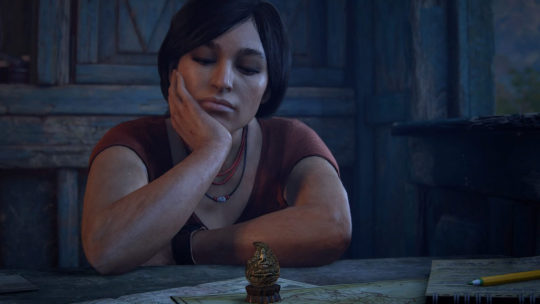
Lost Legacy encapsulates a lot of what I feel about video games as a whole at the moment - as an industry and as a culture. It’s a snapshot of a culture that’s achieving wonderful, beautiful things that are in ways huge - immense, yet somehow can feel so small in comparison to some of the challenges it faces. It’s an industry and culture experiencing a period of great upheaval, where after years upon years of malpractice, terrible things somehow still endure. It’s a space where sometimes it feels like a battle to find the tiniest shred of beauty buried in the dirt and ash, and there doesn’t seem to be an end to the frustration that working thru it brings about while grass-roots labourers continue to be burned.
Like many things in life, both at my age and at the level I guess a person gets to at the exposure rate of a thing, I’ve cut back a great deal on my engagement time with video games, so I’m a lot less patient with the functions and mechanisms of a game. There’s a labour element of video games that I feel developers might think is somehow necessary and there’s a component of that which is true, just not quite in the way they think it is, and it takes a unique frame of thinking to break out of traditional design to understand it. Again I’m not saying there’s anything special about how I understand games - there’s nothing at all original in my thoughts - I’ve shoplifted them wholesale from a hundred other people back from when I used to read Gamasutra and even now when I read designers and the people I follow and talk to on Twitter etc. There’s also absolutely nothing wrong with traditions and the people that enjoy them - just because they’re not my thing any more doesn’t mean they’re bad. It just means I’ve moved to something else and I shouldn’t engage with them.
That, I think, is what I’m waiting for. Kentucky Route Zero, Howling Dogs, Dear Esther, Everybody’s Gone To The Rapture, a whole bunch of others - these are the games I feel are pushing past the boundaries of tradition. Then the moments Uncharted takes itself out of its traditions - Nadine and Chloe’s elephant ride, Chloe’s phone pictures, Elena and Nathan’s house tours especially as Cassie - that’s when I think now you’re running! Run with it! Look, I’m still playing The Division - I’m still moving and shooting and enjoying it.
But we can do so much more. Many developers are doing more. We as an audience need to play more All of us together need to do and play more.
(The epilogue is me figuring I talk a lot of shit about AAA games and nary a word about KRZ, Howling Dogs, Dear Esther and the rest and I get it, but oooooo howdy is it really difficult for me to talk pragmatically about games I actually love)
#Ocean's 8#Ocean's Eleven#Women In Film#Women In Cinema#misogony#sexism#2020#chrono#film#cinema#video games#writing about video games#video games writing#videogames#writing about videogames#video game design#videogame design#gamedev#game dev#Uncharted#Uncharted The Lost Legacy#Uncharted Lost Legacy#Naughy Dog
14 notes
·
View notes
Text
Week 1 - Start of Project
My chosen 10 words are:
Surface - The surface is the outside of anything. The earth, a basketball, and even your body have a surface. A surface is the top layer of something. - This can be expanded more than just seeing the outside of something, you can dive deep with in the surface of something or someone where there can often be more meanings for things or discover elements that make something whole.

Showing the surface and an insight beneath - powerful imagery impact
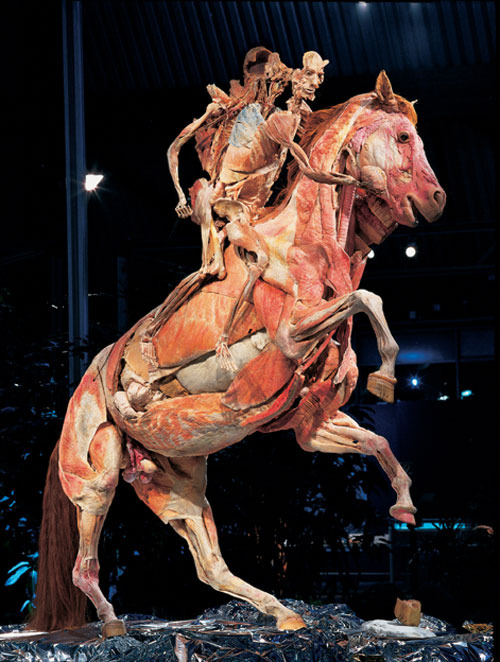
Insight into the anatomy of the surface -

Microscopic view of the ice surface - immersive and detailed look into what creates the surface/ exterior of something that can result in more beauty shining from beneath
Environment - The circumstances, objects, or conditions by which a person or more is surrounded by - country, buildings, nature, situations etc but also can mean the complex of physical, chemical, and biotic factors (such as climate, soil, and living things) that act upon an organism or an ecological community and ultimately determine its form and survival.



Palettes and Patterns - The range of colours used by a particular artist or in a particular picture that uses a repeated decorative design - some artists stick to one set of colours as their ‘trademark colours’ often playing around with the similar patterns but re arranging them with the use of layering, geometry and colour order. In other occasions patterns/ colour palettes would be often repeated and used with in a certain time period - e.g. the 80′s with lots of bold, colourful, crazy and detailed patterns- mainly found on clothing


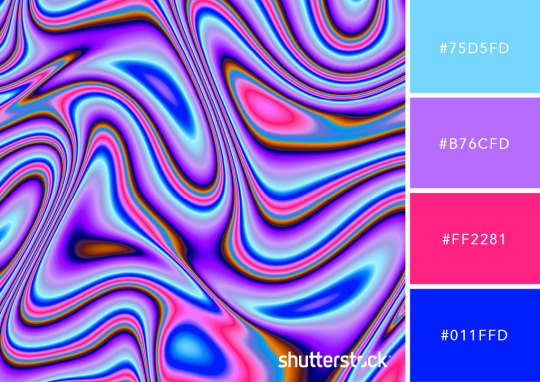
Identity - Identity is who you are, the way you think about yourself, the way you are viewed by the world and the characteristics that define you. An example is a person's name or the traditional characteristics of an American. It can showcase the way people want to live their life as an individual, making it their own through self expression. It can also relate to people loosing themselves and detreating
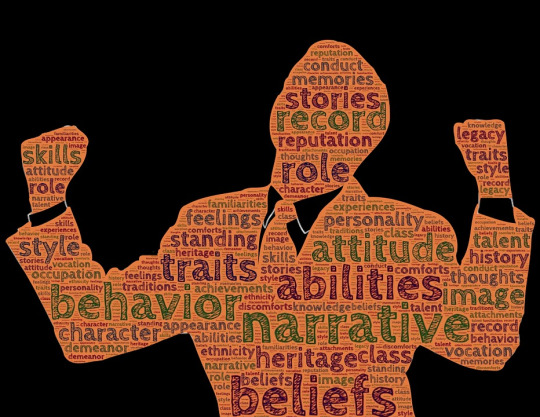


Revolution - a sudden. complete or fundamental change in political organization - government or ruler and the substitution of another by the governed. It can also mean the activity or movement designed to effect fundamental changes in or about situations.

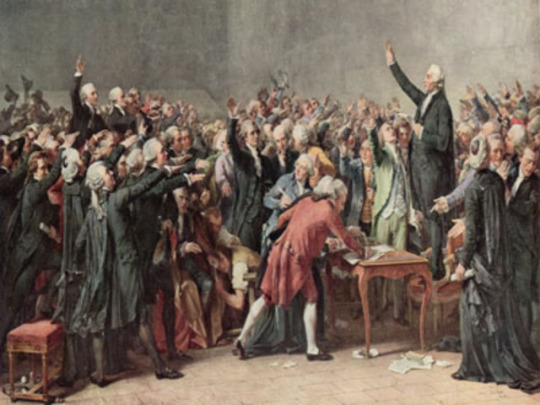
Interior/ Exterior - Interior commonly refers to the inside of something. E.G. An auditorium inside a Theatre or place that lies far inland from a coast or border is said to lie in the ‘interior’ of a country. On the other hand, Exterior is part or the surface of an outside appearance. Another example is representation (as on stage or film) of an outdoor scene - a scene filmed outdoors. It hand tie in with the word ‘Surface’ as it can be referred to the exterior of a person - their appearance
.



Urban - It most commonly is in relation to a city. In that sense, the term may refer to as an urban area, geographical area distinct from rural areas. urban culture, the culture of towns and cities.

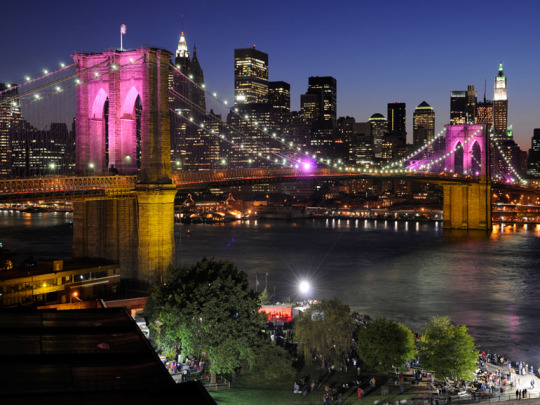

Renaissance - The Renaissance was an Art period in European history marking the transition from the Middle Ages to modernity and covering the 15th and 16th centuries through paintings, sculptures/ statues as well as style of clothing.
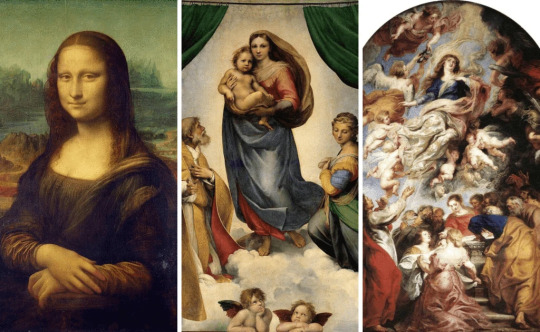
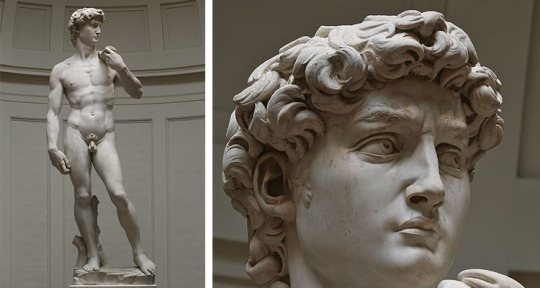

Dystopia - It is an imagined state or society in which there is great suffering or injustice, typically one that is totalitarian or post-apocalyptic. It can branch of into many different situations - Environmental destruction, Nuclear Disaster, Government control, Religious Control, Technological Control, Survival, Loss of Individualism.


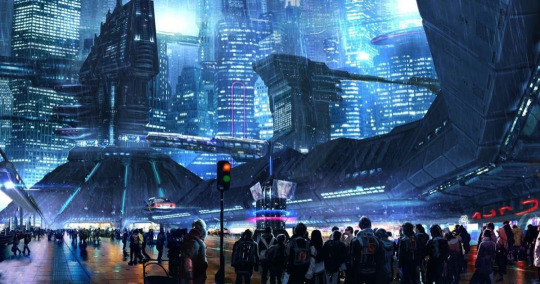
Repetition - Repetition is the simple repeating of a word, within a short space of words, with no particular placement of the words to secure emphasis. It can also be used with in art and patterns e.g. wallpaper repeat designs to create interesting and visually exiting arrangements. Repetition is also used in everyday life, people get advice to follow repeatedly to stay strong and keep going everyday. It also can come into terms with an activity of some sort that a person may do over and over again each day - watch tv, eat food, perform in a show etc
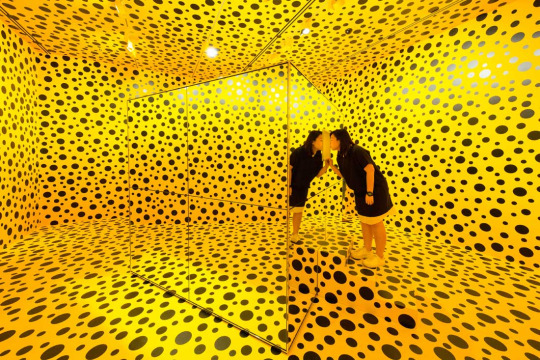
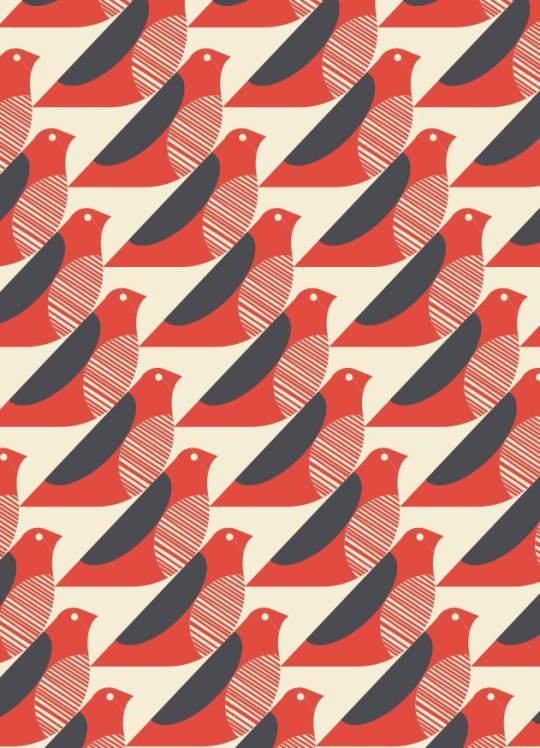
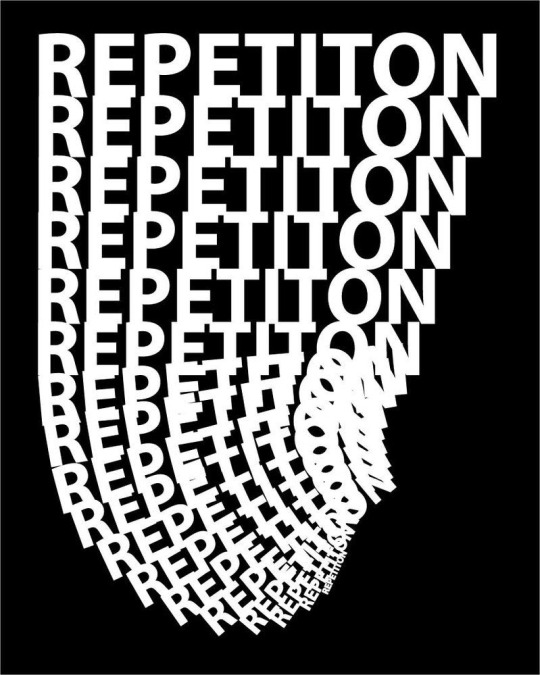
I narrowed my first initial 10 words down to the 5 that I am most keen to use as my theme for my project. I feel with these words, I would be able to come up with some interesting ideas and exiting outcomes.
Surface
Palettes and Patterns
Identity
Interior/ Exterior
Environment
Week 1 Evaluation
Media, skills, processes and techniques - Evaluative section on – Media, skills, processes and techniques that were used/explored – what was learnt – how wide ranging research informed this - and how these met the purpose of the proposal? First section – your planning, themes, specialism and how you have been working.
During this week I used the internet and my blog to research and present the first lot of work for my project. This gave me a look into different topics and words to look into to see what sparked my interests and could potentially be one of the words I pick for my theme/ concept for this project.
Purpose/ theme/concept – Evaluative section on the FMP development – the thought processes – the struggle to solve a problem the journey of change and learning – why decisions were made and for what purpose - what is the point/function of the work?. How the FMP could be further developed in ambitious and innovative ways?
The main goal this week in regards to FMP development was to explore the different avenues that I could take my project down and what I personally am starting to feel that could then lead me onto ideas etc.
One of the main themes that appealed to me the most is the ‘Patterns and Palettes’. I feel like this could be a really interesting route for me to go down and reminds me of the work im familiar working with - the word pattern reminds me of the sewing patterns and fabric designs i work with - on the other hand, the palette portion reminded me of the different use of colour combinations and look to a garment/ costume whether that be as a whole or a specific detailed section. This then led me on to having the idea of creating some form of garment that I could incorporate the patterns throughout the surface of the outcome.
What are you planning for next week? – How and what are you doing?
I am really keen on the whole garment design idea with the incorporation of the patterns and palettes so i am going to create a couple of rough designs experimenting with colour schemes and patterns. I will also include visual inspiration collages from ideas that inspire me to create my outcome as well as looking into colour palettes and what colour combinations compliment each other.
Further Research - Looking into style of garments
To get a further insight into the different style of garments created, I decided to look at some of the best garments/ dresses from the Oscars awards ceremony. This is one of the biggest events to happen every year and always a place to see fresh, new and visually exiting outfits.
The first look that appealed to my taste was from 1982 where Debbie Allen was seen in a white, fully embellished slit fit dress. Although it a moderately simple dress, the fully embellished work on the piece as a whole takes it to another level of ‘Glam’ which is what I feel I am going into the direction for my creation.
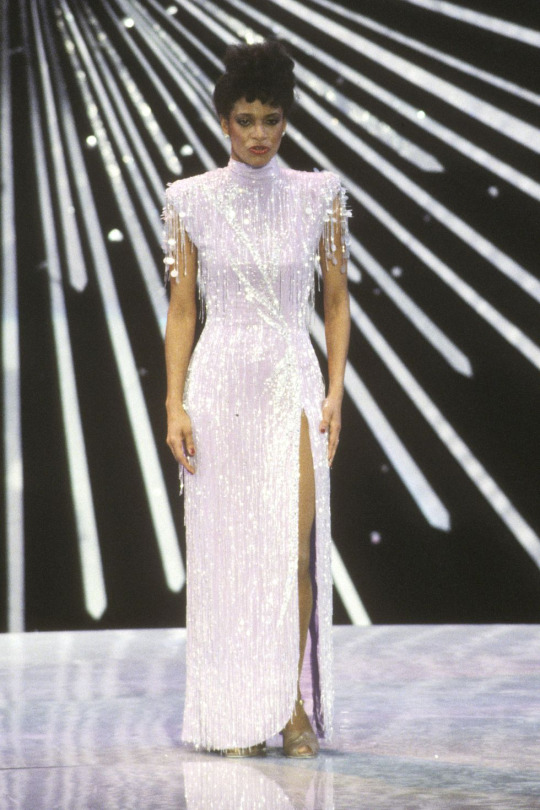
Another garment that was embellished and very fitting with one of my chosen themes ‘Patterns and Pallets’ is this gorgeous embellished pattern dress worn by Jessica Chastain in 2013. Its very clear to see that the garment has many different pattern panels which creates such a stunning yet striking look as a whole but not overwhelming. I feel like this is my inspiration to move forward for my project and what i envision something similar to be as my final outcome.

One of the more plain, simple but effective looks that I saw was a black lace and tulle fit and flare garment worn by Jenifer Lawrence in 2016. There is something really beautiful about the simplicity of the dress but also still feel very detailed with the design through the lace and pleats of tulle. I love the way the subtle lace top portion of the bodice gradually blends into the more elaborate bottom half of the dress. Again, this style is something id love to incorporate and maybe embellish the top lace part with beads and crystals so it would be coherent with the fully beaded bottom portion of some sort.
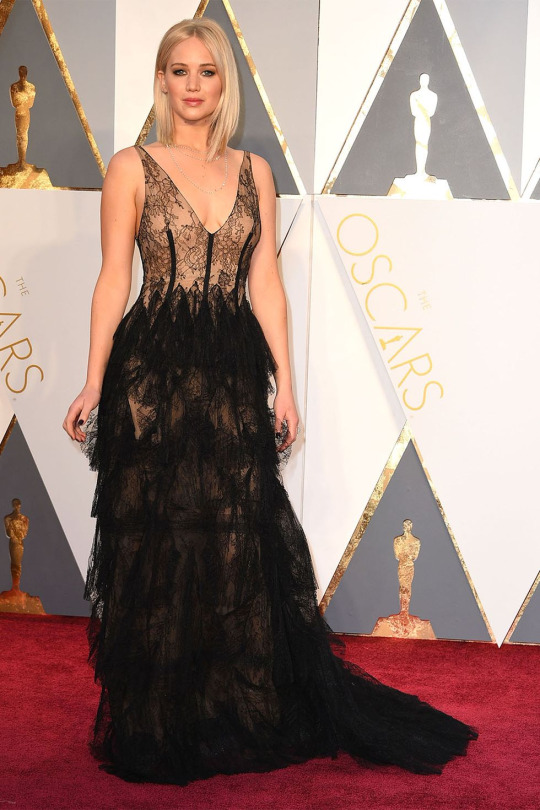
Lastly, one of my other favourites was a beautiful and simple shaped garment with 3D flower elements cascading all over the dress which was worn by Kate Blanchett in 2016. The 3D appliques add such a creative and almost artsy/ crafty style to the gorgeous simplicity of the dress creating a beautiful floral image to look at. This could protentional give me inspiration to add other 3D elements besides just the beads and crystals.

1 note
·
View note
Text
books I’ve read in 2020 (so far) + their ratings
non-fiction
crossing the line: australia’s secret history in the timor sea by kim mcgrath: important research into australia’s theft of oil in timor leste. didn’t rate
hood feminism: notes from the women that a movement forgot by mikki kendall: essay collection dissecting modern feminism, pointing out the exclusionary practices of mainstream feminism and offering new frameworks through which feminism should operate. really recommend. didn’t rate
the uninhabitable earth: life after warming by david wallace-wells: good introduction to environmentalism and the climate disaster. a little too introductory for me but good for those new to the topic. ★★★
homo deus: a brief history of tomorrow by yuval noah harari: it is simply not Sapiens nor as good as Sapiens. Looks at potentials for our future but, thought it was a little poorly researched. Some parts were still interesting though. ★★★
SPQR: a history of ancient rome by mary beard: a little dense at times, but super interesting and detailed look at ancient rome. enjoyed it a lot. ★★★★
sister outsider by audre lorde: collection of audre lorde’s essays and speeches, about feminism, lesbianism, the queer community, being Black and a lesbian ect ect. outstanding, important collection anyone interested in intersectional feminism must read. ★★★★★
all boys aren’t blue by george m. johnson: memoir about johnson’s experiences growing up as a Black gay boy in a poor neighbourhood. Very poignant memoir, written in such accessible language which I liked. guarenteed to get you emotional, another one everyone should read. didn’t rate because it’s so highly personal that felt wrong but highly recommend.
under a biliari tree i born by alice biari smith: memoir by an Aboriginal Australian detailing her life growing up learning traditional Aboriginal ways and how the lives of Indigenous Australian’s have been impacted through the years, specifically in Western Australia. Probably more aimed at school age people but still a 101 I think many Australian’s (and non Australian’s) can benefit from. didn’t rate
classics
maurice by e.m forster: gay man coming of age story in college + themes around class and sexuality. forster’s end note saying he thought it imperative to write a happy ending because we need that in fiction, i love him. ★★★★★
emma by jane austen: read before seeing the movie. loved emma as a character but thought this was okay compared to other Austen I’ve read. ★★★½
perfume by patrick suskind: a man with an incredible sense of smell starts murdering young women to try and bottle their scent for a perfume. weirdest shit I ever read still don’t know how to feel about it. ★★★
the color purple by alice walker: follows the life of Celie, an Black woman living in rural Georgia. deals with her relationship with her sister Nettie, her lover Shug Avery, and with God. this tore my heart to shreds absolutely everyone must read it, like even just for the beautiful writing ALONE. ★★★★
a study in scarlet by arthur conan doyle: its sherlock holmes #1 no further explanation required. not my fave sherlock story, was the weird morman subplot needed? ★★½
dracula by bram stoker: yeah vampires!! this was way easier to read and also way funnier than I expected. we STAN gothic aesthetics and Miss Mina Harker here. ★★★★
fantasy
the diviners by libba bray: teens with magical powers/abilities solving mysteries in 1920′s new york. reread. ★★★★★
lair of dreams by libba bray: the diviners #2. reread. ★★★★½
before the devil breaks you by libba bray: the diviners #3. reread. best one in the series hands down. ★★★★★
the king of crows by libba bray: waited so long for this series ender and it let me down lol. ★★★
clockwork princess by cassandra clare: the infernal devices #3. dont @ me this is my comfort reread series and I was travelling. ★★★★★
we unleash the merciless storm by tehlor kay mejia: we set the dark on fire #2. latinx inspired fantasy about overthrowing a corrupt government with an f/f romance. didn’t like as much as book one but still good, BEST girlfriends ever. ★★★½
wolfsong by t.j klune: basically feral gay werewolves and witches living in a town together. feels like a teen wolf episode but way more gayer. despite that hated the writing style and I don’t like age gap romances so yay the concept no the execution. ★★
the fate of the tearling by erika johansan: the tearling #3. finally finished this series, dunno why everyone loathes the ending so much I thought it was cool. underrated fantasy because it’s very unique. ★★★★
girl, serpent, thorn by melissa bashardoust: persian inspired fantasy about a girl who is cursed by a div to kill anyone she touches. has an f/f romance. bashardoust writes the most aesthetically rich settings I love her. ★★★★
crier’s war by nina varela: reread. f/f enemies to lovers where the main character poses as a handmaiden in order to try and murder the princess whose father killed her family. PEAK gay content literally a modern classic. ★★★★★
we hunt the flame by hafsah faizal: I was so disinterested in this book I barely can describe the plot but basically it’s a prince and a hunter who are enemies but are forced to go looking for this magical artifact together anyway it was boring. ★
ghosts of the shadow market by cassandra clare + others: short story collection set in the shadowhunter world. probably the strongest of her collections but they just don’t hit the same as her full length books. didn’t rate.
a storm of swords: part two by george r.r martin: a song of ice and fire #3. I WILL finish reading these books eventually i swear !! probably the best one yet though. ★★★★
amarah by l.l mcneil: world of linaria #3. high fantasy with politics, dragons, warring races. tolkein/asoiaf vibes if they had more women with agency. didn’t rate because I haven’t decided my feelings on the end yet.
science fiction
This is How You Lose the Time War by Amal El-Mohtar and Max Gladstone: f/f enemies to lovers between spies on rival sides of a time war. good book but writing style wasn’t for me (others love this so eh take my opinion with a grain os salt: ★★★
not your sidekick by c.b lee: main character is from a superhero family but has no powers herself, so she takes an internship working with a superhero corp. has an f/f romance with a villain character. so much fun and super cute
speculative fiction:
the deep by rivers solomon: speculative fiction wherein pregnant African women thrown overboard by slave ships gave birth to babies that became mermaids. main character holds all the memories of her people’s past but runs away after being unable to deal with the burden. about self discovery, intergenerational trauma and the burden of remembering. a little short imo but still all round excellent book ★★★★
how long ‘til black future month? by n.k jemisin: short story collection, many with an afro-futurism focus. hard to explain because there is such a wide variety of stories but this is an AMAZING collection. didn’t rate because I don’t like rating short story collections but wish more people would read it.
mystery
the family upstairs by lisa jewell: woman inherits an english house and starts to unravel the secrets of a mass cult suicide that happened there years ago. loved it because it was wild. ★★★★★
the hand on the wall by maureen johnson: truly devious #3. boarding school mystery where the main character has to solve a murder that happened in the 1920s at her school while another mystery is happening in present time. my least favourite of the series but satisfying conclusion nonetheless. ★★★½
contemporary fiction
maybe in another life by taylor jenkins reid: dual timeline book showing the two outcomes of a decision the main character makes. cool concept but ultimately boring book because I didn’t care about the main character at all. didn’t rate because I didn’t finish it.
girl, woman, other by bernadine evaristo: vignette stories of various women whose lives are vaguely interconnected. incredibly well written with such vivid characters. deserves the hype. ★★★★
tin heart by shivan plozza: australian YA, the recipient of a heart transplant wishes to connect with the family of her donor, after she discovers the identity of her donor. good story but didn’t like the writing style. ★★★
a little life by hanya yanigahara: follows the life of a group of friends living in life, especially that of jude, a closed off and damaged man with a troubling past. a little too torture-porny/Tragic Gays but I cannot deny the author has a beautiful writing style and I went through all the emotions. didn’t rate
a girl like that by tanaz bhathena: explores the events leading up to the main character dying in a car crash. set in Jeddah, saudi arabia and explores expectations on women, feminism and expressions of sexuality and relationships between women during teenage years. kinda no good characters but I loved it for it’s messy depiction of teen girls (whilst not condemning them for this). underrated. ★★★★
little fires everywhere by celeste ng: drama in white american suburbs when a new family moves in and the neighbours start investigating their past. eh, I heard a lot about this and thought it was just okay. ★★★
stay gold by tobly mcsmith: trans boy decides to go stealth at his new school and falls for a cheerleader, georgia. about navigating being trans and definitely felt like it was written to educate cis people. it was okay but ultimately not my thing and not really the story I was looking for, even though I respect it being written by a trans author and still would recommend to certain people. ★★½
everything leads to you by nina lacour: main character and her best friend have to unravel a hollywood mystery, all while the main character is trying to get over her ex-girlfriend and find work as a set designer. f/f romance and loved the focus on movie making and the power of stories. ★★★½
the falling in love montage by ciara smyth: a girl meets another girl at a party, but she’s not looking to date due to the amount of family issues she has going on. so her and the girl decide to spend the summer having fun, renacting scenes from rom-coms, but never dating. awesome family dynamics and the relationship between the two girls was sweet also set in ireland which is fun.
normal people by sally rooney: explores the relationship between connell and marianne, who meet in school, date secretly, and then are inexplicably drawn to each other for the rest of their lives. explores power dynamics, relationships, love and trust, and what we owe to eachother. great book, great mini-series, love it to bits. ★★★★★
the glass hotel by emily st john mandel: impossible to explain this book, but there’s a mystery about grafitti, a ponzi scheme and a character falling to their death on a boat under suspicious circumstances. honestly idk what happened in this book but I liked it. ★★★½
historical fiction
half of a yellow sun by chimamanda ngozi adichie: historical fiction about the biafran war loosely based on adichie’s family experiences. incredibly well written with an ending that punches you in the gut. ★★★★
hamnet by maggie o’farrell: explores the shakespeare family after the death of their child, Hamnet, from the plague, and how this leads to Shakespeare writing Hamlet. cool as fuck concept and boring as fuck book with such tropey female characters. ★★
all the light we cannot see by anthony doerr: WW2 fiction, dual perspective between a blind girl living in france and a german boy forced into nazi youth. I cannot believe this book is award winning it’s so boring and predictable and i reget the time i wasted on it. ★
poetry:
on earth we’re briefly gorgeous by ocean vuong: poetry memoir. vuong writes a letter to his illiterate mother, knowing she’ll never read it, exploring their relationship, his experiences growing up as second generation Vietnamese-American, and hers during the Vietnam War. My favorite book I’ve read so far this year, just too good to explain, genuinely just feel like everyone is better off for having read this. ★★★★★
currrently reading:
girls of storm and shadow by natasha ngan
meet me at the intersection: edited by rebecca lim & ambelin kwaymullina
stamped from the beginning: the definitive history of racist ideas in america by ibram x. kendi
get a life, chloe brown by talia hibbert
#books#reading#booklr#book#book recommendation#mine#reading update#did anyone ask for this#no#did i do it anyway yes#its my continuing agenda to get book tumblr to read books that aren't soc and aftg aaldkskska#ok bye#after making this its become apparent to me I need to balance out how much fantasy I let myself read akdksks#i lov fantasy but im TRYING to read more uhh non fiction and lit fic
6 notes
·
View notes
Text
AURORA’S BATTLE-READY DREAMY POP IS POISED TO CHANGE THE WORLD
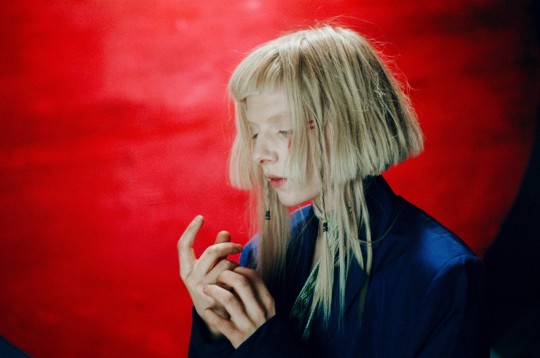
Interview by Rachel Morris for nite life online (November 1st, 2019). Growing up in relative isolation in the woodlands of Os, Norway; singer and producer Aurora Aksnes weaves an ethereal yet battle-ready brand of dreamy pop music that is connecting with a growing fanbase across the globe.
If on the surface her subject matter conjures Nordic fairytale-style images of wolves, moonlight and flowing rivers; it’s her surprising juxtaposition of emotional vulnerability and warrior-like resolution that has resonated with a world, at least in part, concerned with mindfulness, social and environmental responsibility – and ready to change for the better.
A WORLD, AT LEAST IN PART, CONCERNED WITH MINDFULNESS, SOCIAL AND ENVIRONMENTAL RESPONSIBILITY – AND READY TO CHANGE FOR THE BETTER
Aurora’s latest project comes in two parts or, more tellingly, steps. Aurora doesn’t shy away from a singular message. Rather than leaving her work open to interpretation, Aurora is happy to say that her music is instructive.
2018’s Infections of a Different Kind – Step 1 and summer’s A Different Kind of Human – Step 2 are ‘two parts of one emotional process’ Aurora explains. ‘They’re related, but they’re different steps on the way – different steps that you have to take to end up where I want you to end up emotionally.
STEP 1 IS WAY MORE INDIVIDUAL AND PERSONAL, WHILE STEP 2 IS MORE POLITICAL
‘Step 1 is way more individual and personal, while Step 2 is more political and it’s more about looking around you and seeing what you can offer the world. You have to see what you can offer yourself first and become a warrior for yourself, and then you should become a warrior for the world and for everyone that needs you out there.
BECOME A WARRIOR FOR YOURSELF, AND THEN YOU SHOULD BECOME A WARRIOR FOR THE WORLD
‘Step 1 was kind of a gift from me to the fans I already had. I wanted to release it as a surprise, so that my fans would be the first ones to hear it, rather than reading reviews in the papers. And then Step 2 has fuelled my fans in a really, really fun way. I can see them all. I feel like all of my fans are such kind and wonderful people, and many of them share in common with me how it feels to be an underdog. So it becomes a very instinctive thing to fight for anything else that is an underdog in this world.
WE’RE ALL A PART OF THAT CHANGE, BECAUSE IT’S OBVIOUSLY UP TO THE INDIVIDUALS NOW
‘A Different Kind of Human – Step 2 is about standing up for everything we love and believe in. So it’s been really fun to see them grow more passionate about the situations and the world that we would all like to change. We’re all a part of that change, because it’s obviously up to the individuals now.’
While most of us find inspiration in musical or artistic reference points from what has come before, Aurora finds a muse in herself and in nature. To such point, in fact, that she doesn’t like listening to music, which becomes like a noisy distraction from the music that’s innately in her head.
‘I just don’t need music in that way right now in my life. When I grew up, we didn’t have MTV, we didn’t have radio in my house, I didn’t really have any natural way of discovering new music.
‘I have so much music in my head all the time – every second of every day, I’m always making an album. The second I released Step 2, I started on my next one, even though it was midnight. I’m always in the process of making a new baby and then I find it really distracting to listen to music. It almost becomes noisy, even though it’s beautiful.
I FIND IT REALLY DISTRACTING TO LISTEN TO MUSIC. IT ALMOST BECOMES NOISY, EVEN THOUGH IT’S BEAUTIFUL
‘I listen to Enya, because she’s very reliable, she gives my brain calmness. I listen to her when I’m on an airplane, because they’re noisy, I like to replace the airplane or airport noise with music. So I like to listen to Enya – and heavy metal’ she adds.
Shut off from outside influence, firstly by circumstance and now by choice, if a modern day artist was ever born to music, surely it’s Aurora. Since childhood, music has been a very natural way for her to translate emotion.
‘I never wanted to be famous, I didn’t want to do anything with the music, I just really enjoyed writing and making music. It was something I knew from a very young age. It made me feel very powerful and in control – and also without control.
I THINK I WOULD BECOME SICK WITHOUT MUSIC
‘It makes me feel like I know why I’m here. It feels like now pain has a purpose and happiness has a purpose, when I can write about it and make it into sound. Music gives everything I experience and everything I see purpose, so I don’t know what I would do without it. I think I would become sick without music. I don’t think I would have a good time on this planet.’
Despite its Nordic complexity, mysticism and themes, Aurora’s music has reached all corners of the globe, touring throughout UK, Europe, US, South America and Asia just in 2019. While on one hand, she can’t understand this level of success – ‘it’s so strange’ – in the same breath, Aurora solves her own riddle: nature taught her to be a philosopher.
EVERYONE SHOULD LISTEN MORE TO NATURE
‘I think everyone should listen more to nature, because once you’re out there, nothing else really matters. How you look or what you’re doing tomorrow, the things you didn’t manage to complete, or the things you feel like you’re not doing well enough, or the clothes you’re wearing.
‘I solve most things in life by just thinking until I have a solution. I was in the woods for at least nine hours every day my whole childhood, it’s just fascinating and it gives you perspective. You realise how small the stupid problems are and you realise how beauty is free. And that you’re smaller than the big trees and you’re bigger than the tiny bugs and it just lets you exist.
NATURE IS THE ONE PLACE I’VE DISCOVERED (…) THAT GIVES ME THE CHANCE TO BE NOTHING MORE THAN A BEATING HEART AND A BRAIN
‘I think this world is very demanding of us and we as people are very demanding of ourselves. It’s hard to be a human these days and nature is the one place I’ve discovered, so far at least, that gives me the chance to be nothing more than a beating heart and a brain.’
The power of nature is also something Aurora can invert to encourage self-reflection, recording the whole of A Different Kind of Human – Step 2 in a small, dark room.
‘A Different Kind of Human is a more political album. I felt like I had to reach more within myself and figure out where I stand and figure out my own opinions,’ Aurora explains. ‘That’s why I wanted to be in a small, dark room, because there’s no big field for your energy or your thoughts – they just hit the wall and then come back to you like a bouncing ball.
I HAD TO REACH MORE WITHIN MYSELF AND FIGURE OUT WHERE I STAND AND FIGURE OUT MY OWN OPINIONS
‘With every album, it’s very important for me to make them in different spaces so they don’t touch. For my next album, that I’m making now, I’m writing the skeletons of my songs and the soul of them wherever I go. But when I sit down and actually produce them and make the album into one whole baby, then I’ll have to go somewhere else. I know where I’m going, I’m not going to say yet, but it’s going to be a very different place again from every other place I’ve made an album before.’
As an artist that evidently pours so much of herself into her music, you’d imagine that making an album is an exhausting and somewhat draining process, but for the born music maker, it’s quite the opposite. Though Aurora had hinted at a possible 2020 follow up after Step 1 was released, Step 2 hit shelves less than half way through 2019. It’s also the first record that Aurora has co-produced every track, having dipped her toe in with two tracks on Step 1.
‘I find very energising. When I’m in the studio, I’m there for at least twelve hours every time – until late, late night. There is no deadline and there is no finish line when you create. The possibilities are endless, especially now I’ve learned to become a producer.
THE POSSIBILITIES ARE ENDLESS, ��ESPECIALLY NOW I’VE LEARNED TO BECOME A PRODUCER
‘I find producing extremely fun and extremely important too. I know in this world, many women have struggled with being able to be given space to produce their own songs and music. So I find it really important to step up for myself and my music. I would love one day to teach more female artists how to begin.’
It’s hard not to feel empowered both listening to and talking to Aurora, who so beautifully presents the idea that a better you and a better world is within grasp. As she says, it’s down to the individuals – and those that inspire them. She opens her the two-step project: ‘I will be your warrior’, and this is no doubt just the beginning of Aurora’s Queendom.
37 notes
·
View notes
Text
Herman Khan, The Emerging Japanese Superstate (1970):
[The] Japanese are something between the West, with its general Faustian attitudes and concept of "dominion over land and animal," and China, India, and many primitive cultures, which usually try to fit man into the environment in a natural, noncoercive, and nondisturbing manner. The Japanese are somewhat willing to make changes in the environment and to assert their will and fulfill their objectives, but they tend to do so less grossly, less starkly, and with greater moderation, care, and even love for the environment than is characteristic of the root-and- branch restructuring common in Western tradition.
Alex Kerr, Dogs and Demons (2001):
Writers on Japan today mostly concern themselves with its banks and export manufacturing. But in the greater scheme of things, for a wealthy nation does it really matter so much if its GNP drops a few percentage points or the banks falter for a few years? The Tang dynasty poet Du Fu wrote, “Though the nation perishes, the mountains and rivers remain.” Long before Japan had banks, there existed a green archipelago of a thousand islands, where clear mountain springs tumbled over mossy stones and waves crashed along coves and peninsulas lined with fantastic rocks. Such were the themes treasured in haiku, bonsai and flower arrangements, screen paintings, tea ceremony, and Zen – that is, everything that defined Japan's traditional culture. Reverence for the land lies at the very core of Shintoism, the native religion, which holds that Japan's mountains, rivers, and trees are sacred, the dwelling place of gods. So in taking stock of where Japan is today, it is good to set economics aside for a moment and take a look at the land itself.
When we do, we see this: Japan has become arguably the world's ugliest country. To readers who know Japan from tourist brochures that feature Kyoto's temples and Mount Fuji, that may seem a surprising, even preposterous assertion. But those who live or travel here see the reality: the native forest cover has been clear-cut and replaced by industrial cedar, rivers are dammed and the seashore lined with cement, hills have been leveled to provide gravel fill for bays and harbors, mountains are honeycombed with destructive and useless roads, and rural villages have been submerged in a sea of industrial waste.
Similar observations can be made about many other modern nations, of course. But what is happening in Japan far surpasses anything attempted in the rest of the world. We are seeing something genuinely different here. The nation prospers, but the mountains and rivers are in mortal danger, and in their fate lies a story-one that heretofore has been almost entirely passed over by the foreign media.
H. P. Lovecraft, describing a creepy New England hamlet doomed to be the setting for one of his horror stories, would say, “On viewing such a scene, who can resist an unutterable thrill of ghastliness?” For a modern traveler seeking something of that Lovecraftian thrill, nothing would do better than a trip to Japan's countryside.
During the past fifty-five years of its great economic growth, Japan has drastically altered its natural environment in ways that are almost unimaginable to someone who has not traveled here. In the spring of 1996, the Japan Society invited Robert MacNeil, the retired co-anchor of The MacNeil/Lehrer News-Hour, for a month's stay in Japan. Later, in a speech presented at the Japan Society in New York, MacNeil said that he was “confused” about what he saw, “dismayed by the unrelieved banality of the [800-kilometer] stretch from Hiroshima to Tokyo, the formless, brutal, utilitarian jumble, unplanned, with tunnels easier on the eyes.”
Across the nation, men and women are at work reshaping the landscape. Work crews transform tiny streams just a meter across into deep chutes slicing through slabs of concrete ten meters wide and more. Builders of small mountain roads dynamite entire hillsides. Civil engineers channel rivers into U-shaped concrete casings that do away not only with the rivers' banks but with their beds. The River Bureau has dammed or diverted all but three of Japan's 113 major rivers. The contrast with other advanced industrial nations is stark. Aware of the high environmental cost, the United States has decided in principle not to build any more dams, and has even started removing many that the Army Corps of Engineers constructed years ago. Since 1990 more than 70 major dams have fallen across America, and dozens more are scheduled to be dismantled. Meanwhile, Japan's Construction Ministry plans to add 500 new dams to the more than 2,800 that have already been built.
To see at close hand how the construction frenzy affects one small mountain village, let us take a short journey to Iya Valley, a picturesque fastness of canyons and peaks in the center of the southern island of Shikoku. When I bought an old thatch-roofed farmhouse in Iya in 1971, people considered this region so remote that they called it the Tibet of Japan. Villagers subsisted on crops such as buckwheat and tobacco, as well as forestry.
Over the next twenty-five years, young people fled Iya for the prosperous cities, and local agriculture collapsed. With its dramatic landscape and a romantic history going back to the civil wars of the twelfth century, Iya had a golden opportunity to revive its local economy with tourism and resorts in the 1980s. Yet in a pattern that repeats itself in countless regions across Japan, Iya failed to develop this potential. The reason was that the village suddenly found itself awash with cash: money that flowed from building dams and roads, paid for by a national policy to prop up rural economies by subsidizing civil-engineering works. Beginning in the 1960s, a tidal wave of construction money crashed over Iya, sweeping away every other industry. By 1997, my neighbors had all become construction workers.
Most foreigners and even many Japanese harbor a pleasing fantasy of life in the Japanese village. While driving past quaint farmhouses or perusing lovely photographs of rice paddies, it's tempting to imagine what bucolic country life must be: oneness with the seasons, the yearly round of planting and harvesting, and so forth. However, when you actually live in the countryside you soon learn that the uniform of the Japanese farmer is no longer a straw raincoat and a hoe but a hard hat and a cement shovel. In 1972, for example, my neighbor Mrs. Оto farmed tea, potatoes, corn, cucumbers, and mulberry for silkworms. In 2000, her fields lie fallow as she dons her hard hat every day to commute by van to construction sites, where her job is to scrape aluminum molds for concrete used to build retaining walls. In Iya Valley, it makes no sense to ask someone, “What line of work are you in?” Everyone lives off doboku, “construction.”
More than 90 percent of all the money flowing into Iya now comes from road- and dam-building projects funded by the Construction, Transport, and Agriculture ministries. This means that no environmental initiative can possibly make headway, for Iya has become addicted to dams and roads. Stop building them, and Mrs. Оtо and most of the other villagers are out of work. Without the daily pouring of concrete, the village dies.
The most remarkable paradox is that Iya doesn't need these roads and dams; it builds them only because it must spend the construction subsidies or lose the money. After decades of building to no particular purpose, the legacy is visible everywhere, with hardly a single hillside standing free of giant slabs of cement built to prevent “landslide damage,” even though many of these are located miles from any human habitation. Forestry roads honeycomb the mountains, though the forestry industry collapsed thirty years ago. Concrete embankments line Iya River and most of its tributaries, whose beds run dry a large part of the year because of the numerous dams siphoning water to electric power plants. The future? Although traffic is so sparse in Iya that in some places spiderwebs grow across the roads, the prefectural government devoted the 1990s to blasting a highway right through the cliffs lining the upper half of the valley, concreting over the few scenic corners that are left.
If this is what happened to the “Tibet of Japan,” one can well imagine the fate that has befallen more accessible rural areas. To support the construction industry, the government annually pours hundreds of billions of dollars into civil-engineering projects-dams, seashore- and river-erosion control, flood control, road building, and the like. Dozens of government agencies owe their existence solely to thinking up new ways of sculpting the earth. Planned spending on public works for the decade 1995-2005 will come to an astronomical ¥630 trillion (about $6.2 trillion), three to four times more than what the United States, with twenty times the land area and more than double the population, will spend on public construction in the same period. In this respect, Japan has become a huge social-welfare state, channeling hundreds of billions of dollars through public works to low-skilled workers every year.
It is not only the rivers and valleys that have suffered. The seaside reveals the greatest tragedy: by 1993, 55 percent of the entire coast of Japan had been lined with cement slabs and giant concrete tetrapods. An article in a December 1994 issue of the popular weekly Shukan Post illustrated a ravaged coastline in Okinawa, commenting, “The seashore has hardened into concrete, and the scenery of unending gray tetrapods piled on top of one another is what you can see everywhere in Japan. It has changed into something irritating and ordinary. When you look at this seashore, you can't tell whether it is the coast of Shonan, the coast of Chiba, or the coast of Okinawa.”
Tetrapods may be an unfamiliar word to readers who have not visited Japan and seen them lined up by the hundreds along bays and beaches. They look like oversize jacks with four concrete legs, some weighing as much as fifty tons. Tetrapods, which are supposed to retard beach erosion, are big business. So profitable are they to bureaucrats that three different ministries – of Transport, of Agriculture, Forestry, and Fisheries, and of Construction – annually spend ¥500 billion each, sprinkling tetrapods along the coast, like three giants throwing jacks, with the shore as their playing board. These projects are mostly unnecessary or worse than unnecessary. It turns out that wave action on tetrapods wears the sand away faster and causes greater erosion than would be the case if the beaches had been left alone.
It took some decades for this lesson to sink in, but in the 1980s American states, beginning with Maine, began one by one to prohibit the hard stabilization of the shoreline; in 1988, South Carolina mandated not only a halt to new construction but removal of all existing armoring within forty years. In Japan, however, armoring of the seacoasts is increasing. It's a dynamic we shall observe in many different fields: destructive policies put in motion in the 1950s and 1960s are like unstoppable tanks, moving forward regardless of expense, damage, or need. By the end of the century, the 55 percent of shoreline that had been encased in concrete had risen to 60 percent or more. That means hundreds of miles more of shoreline destroyed. Nobody in their right mind can honestly believe that Japan's seacoasts began eroding so fast and so suddenly that the government needed to cement over 60 percent of them. Obviously, something has gone wrong.
#I don't know whether this is still true of Japan#but you still see those tetrapods and concrete embankments everywhere#they haven't gone away
277 notes
·
View notes
Text
What is the game“Detective Pikachu” about?
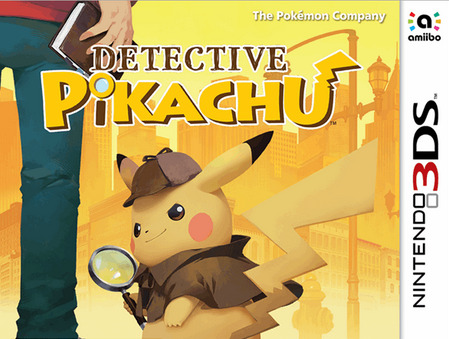
Hello! So this is going to be a long post.
Ever since the trailer was posted recently, I’ve seen a lot of reactions towards Detective Pikachu: The Movie. Most people know it’s based on the 2017 released 3DS game Detective Pikachu, few (of those) people have actually played it. I personally always understood why it was like that, but thought it was a pity because it’s filled with great details. Now my own opinion on the game aside, which is that I really love it, I felt like I should make an “extensive” info post on facts and things to know about the game! And I don’t care if this gets barely any notes - I just want to feel more peace knowing I tried explaining what the game is about! So here’s some facts, partially highlighting similarities and differences between game and (what we know of the) movie.
tl;dr In this post, I’ll explain what you should know about the game!
Premise
The very rough premise between the movie and the game seems exactly the same: A detective mystery in a world with Pokemon. (To unpromptedly point out a reason why I loved the game: There is a difference between the main games’ and lot of spinoffs’ setting, “Pokemon world”, and this game’s setting, “what a world much like ours would be like if it had actual Pokemon in it”.) Tim Goodman, young adult, comes to Ryme City after his father, Harry Goodman, went missing. His father was a detective last seen working on a tough case around Ryme City. But upon Tim’s arrival there he gets to know an odd Pikachu that only he is able to communicate with. They decide to team up, combining their wits to solve cases that slowly get them closer to the secret behind the case Harry has been last working on.
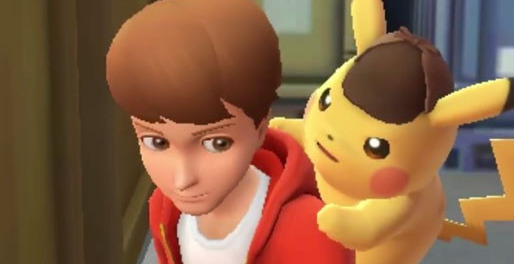
Gameplay
Here’s the reason I think only few people have played the game or the people who played it weren’t violently recommending it: The cases are VERY easy to solve and the gameplay is rather simple even when still subjectively fun. Complexity is, precisely, age-wise ranging to be fit for smart 10 year olds until interested 16-year olds. This comes from the story being too complex to follow for younger kids really, but the writing style and happenings in the story and the gameplay being too silly and straightforward for a majority of anyone older to enjoy. A specific target audience. It’s a detective game by nature: As Tim, accompanied or instructed by Pikachu, you usually run around in a certain location after having stumbled across a case, asking the people present at that place about hints, testimonies and other related things. Not only humans can be asked as witnesses, even and especially Pokemon too, just as much as humans. You also check out things in the area to collect hints.
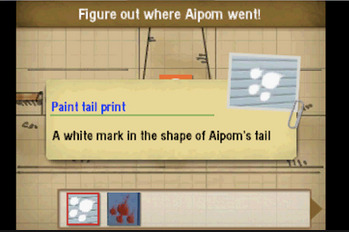
Sometimes riddles have to be solved. The main gameplay revolves around working towards the answer to the big question of the case, like “Who was the culprit?”, by answering smaller questions leading to that, by finding evidence in things characters have said and things you’ve found. Rarely there’s simple quicktime events, for some reason, mostly in the middle of action cutscenes when a case isn’t done yet.
Simple facts about the game’s story
-Tim Goodman is actually a college student who also knows how to drive. (I felt like pointing this out. This dude looks like a lost 16 year old at the max.) -The story is 9 or so chapters long. In each a case is solved. -Literal only problem I had with the game: A major central story question was left open even until the very end. As in, not answered. (Still wondering whether the movie answers that and all related questions.) -Pikachu is the prominent main Pokemon role. Other Pokemon have side roles, some to a bigger degree than others, but Pikachu is very prominently the Spotlight Pokemon. -There’s a bunch of reoccurring important characters, such as friendly TV reporter Emilia Christie (who as far as I remember prominently is in every chapter?), levelheaded detective office boss Mike Baker, and others. -Only mild violence, as some age warnings say. Down to earth language. Zero murders, but themes like theft and more or less, vaguely, smuggling or black market.
Other facts about the game
-3D cartoon graphics overall. No dialogue sprites or 2D cutscenes or anything. -In general, it’s optically more bright and colorful rather than the opposite. (hint hint, the movie’s visuals are the COMPLETE opposite.) -Ryme City is the general location everything happens in and around, but the places specifically get rather diverse. You’ve got the city and the detective’s offices, sure, but there’s a park, a laboratory, a TV studio, an abandoned theme park, an island, and a cave, among other places. -The cases are pretty diverse too. -I feel like it’s important to highlight: Pokemon from all current 7 main gens make an appearance. Yes, indeed, Alola Pokemon are in there. On top of my mind I can think of a Mimikyu and a Brionne. (Ah yeah, there’s also Stufful for example.) But there’s Kalos pokemon like Fletchling and Phantump and Floette, Unova’s Trubbish and Chandelure and Solosis, Sinnoh’s Kricketune and Drifloon and Buneary, Hoenn’s Feebas and Metang and Tropius... and of course Johto and Kanto are there. Duh. This is just an excerpt - there’s honestly tons of Pokemon in there playing a role, even some unexpected ones.

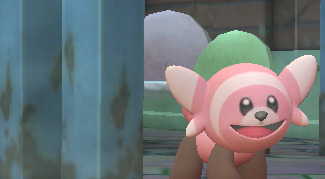
-All cutscenes are fully (and nicely!) voiced, and what’s more, all Pokemon have voiced sounds even outside of them. For some reason the game has environmentally individual sound design in that regard, by which I mean that if you run with Tim next to a Pokemon, you’ll hear its sound louder than you would standing on the opposite side of the room. -This Pikachu is a coffee enthusiast (and as far as I remember a big cookie fan too). -This isn’t a game fact, but I don’t know why the Detective Pikachu amiibo is so huge. Someone please tell me.
Any other questions? Rambles? Definitely drop me a message!
159 notes
·
View notes
Text

@wolfshadow thaaaaank you. I called into work today and this is definitely a better way to spend my time :D
1) Family vacation that includes Schneider
Penelope really wants to take a family trip before Elena goes off to college because while she is so, so proud of Elena getting into Bryn Mawr, she is already feeling a little panicked about her daughter moving so far away.
But Lydia still hates flying, and Dr. B has been letting Penelope run the office more as he starts to consider retirement, so its hard to find enough time to take a trip before the end of summer
Schneider blasts through a dozen suggestions but especially wants to take them hiking in British Columbia. Not a single Alvarez is interested in that. Most of them grew up in LA, they aren’t exactly one with nature.
He’s kinda sarcastic when he suggests Disneyland because it hardly counts as a trip when its only an hour away, plus its such a cliche, right? Alex is too old to really experience any childlike wonder anymore and Elena never enjoys huge displays of blatant consumerism. She probably has 3 articles at ready discussing the environmental toll of theme parks.
But no one voices a single objection because Penelope’s eyes start shining at the idea of her family in Mickey Mouse ears and she starts imagining (hallucinating?) her kids when they were younger, back when she could barely afford to take them to a street fair let alone Disneyland. Sometimes her papi shows up in the imagined memories; sometimes Victor is there and they had never separated. Weirdly, Schneider is always present in these visions.
Schneider is pumped when Penelope agrees. Yeah, he might have been joking when he suggested it. But he’s totally been to Disneyland like 6 times. All the sights and sounds, the frenetic energy, the sugar overload from all the churros... its like an innocent natural high that doesn’t trigger his addictive personality.
Penelope starts fishing change out of the sofas and recycling cans for extra spending money but Schneider insists on paying. Penelope hates it when he spends money on them like this. Bringing over a load of groceries he is going to eat most of it is one thing, but Disneyland isn’t cheap and even though they are comfortable financially these days, it still feels like charity.
Schneider finds several clever ways around this. He insists he has to treat Elena, a combination farewell and birthday present. Schneider has never been able to shake the feeling that he still owes Alex after that ugly scene in the laundry room so obviously Penelope has to let Schneider do this for him. Dr B has an extra pass to the park he never uses, so Lydia only needs to be kept hydrated.
They’re a little worried about how Lydia will manage all the walking until Alex shows her a couple viral videos of older folks doing stunts on electric scooters set to rap music. She is willing to be convinced that a Rascal can be cool so she can join the fun. “And when you get tired, papito, you can ride with me.” Sometimes she forgets Alex isn’t a little boy anymore and wont exactly fit into the basket.
Once convinced, Penelope goes all out. She is hunting groupons and researching where to find the cheapest deals in the park. She has matching t-shirts and caps made for everyone, to make it easy to find each other if they get separated
The best part of the entire endeavor for Schneider is when Penelope hands him the cap embroidered with ALVAREZ, and the shirt with his name screen-printed across the shoulders like a jersey. Everyone has a matching one of their own. He’s never felt more included in their lives as when he is strutting around with the Alvarez family name written all over him.
Elena throws up. Twice. But she’s determined not to spoil the day for anyone. Eventually she figures out what part of the rides to close her eyes for, then she doesn’t feel nearly as dizzy after. Schneider stops buying her churros though.
Penelope goes on a few rides when the kids beg her to but mostly enjoys the mami moments of waving to Elena and Alex as the rides spin them closer and then away again.
When Lydia needs a break from the sun, Schneider keeps Penelope company as she watches. The childlike part of him is buzzing to run on to the next ride, the next cotton candy stand, but mostly he enjoys how the scene feels. Standing next to the best mom he knows, seeing the joy on the kids’ faces as they wave madly at him on their way past.
Schneider never expected to have the life others had with a happy home, a partner for mutual support, kids to watch grow up, taking family vacations together, sharing good times as well as bad. He knew his addiction would never let him build that kind of life. Yet somehow... here he was. With everything he never thought he deserved.
He is not getting choked up with standing less than 5 yards away from someone in a Donald Duck costume. He just isn’t.
As the fireworks fade from the sky at the end of the day, the exhausted family prepares to leave. Elena is bogged down with bags. It turns out blatant consumerism is easier to ignore once you find the lgbt pride merchandise section in the gift shops. Schneider bought her every single thing she stopped to coo over. Alex is regretting his shoe choice. Yeah, he looks fly, but there’s zero arch support in the trendy sneakers and his feet are sore.
Lydia managed to kill the battery in the electric scoot when papito convinced her to try stunts with it and they spent 20 minutes doing donuts outside the bathroom while Elena was puking. They almost hit like 3 people and it was the best thing for everyone that Penelope was inside helping her daughter clean up
Lydia’s cane was.... somewhere in their mess of merchandise. Possibly in the bag that contained authentic Disney mouse-ear caps with embroidered names. Rather than stop to dig it out, Schneider hefted the tiny woman up for a piggyback ride. She giggling like a teenager and the aroma of violets managed to overpower the theme park smells.
Instead of taking the tram to the parking lot they end up at one of the resort hotels and Penelope is too tired to scold Schneider for booking them a suite without asking. Instead she ignores how much it must have cost him and just thanks her lucky stars she didn’t have to make the drive home.
She barely manages to get Elena and Alex through a shower before they collapse, too tired to even complain about sharing a bed with each other
Lydia is fast asleep in the bed Penelope cant wait to crawl into herself.
First she wants to thank Schneider again for giving them this day. Its hard for her to accept a big gift like this, even when she knows the money doesn’t mean anything to him. But she takes his hand, trying to convey how much it means to her that he wants to give this kind of joy to her children just because he loves them.
They fall asleep on the sofa, hands still linked, heads pillowed on each other, both still wearing their matching ALVAREZ gear.
This got long, imma have to do another post for the other prompt. Thaaaaaank you again for giving me an excuse to rave about the Alvarez family for a bit.
#odaat#alvarez headcanons#penelope alvarez#alvareider#bonus material: it was a FAMILY day at Disneyland and it was great#Schneider never stops feeling blessed for being included as part of the family#but he also knows what its like to be an outsider and want to be part of that close-knit unit#so SURPRISE he is treating everyone to a second day at the park#he brings in Syd so they can spend more time wiht Elena before she leaves#Dr. B arrives to squire Lydia around for day 2#he even invited Victor and his wife because he knows the other man must miss the family he had#the same way schneider had ached for the family he never had before the Alvarez clan let him into their lives
14 notes
·
View notes